
Licensed by Dubai Development Authority INFRASTRUCTURE Polypipe’s Adam Smith on doing things properly DATA-DRIVEN Laura Morgan and the power behind JLL’s research SAUDI FRONT-LINE Nour Albilal is breaking the mould 100 THE 100 TH ISSUE The 100th Issue Extra-length commemorative edition
Ÿ
Ÿ
Ÿ
Ÿ
Ÿ
Ÿ
Threat & Risk Assessment
Gap Analysis
Security System Design

IT/AV Design
Master Planning & Development
Operational Requirements
Ÿ
Ÿ
Ÿ
Ÿ
Ÿ
Ÿ
Testing & Commissioning
Control Room Design
System Integration
Policies & Procedures
Site Surveys & Audits
Crisis Management
Empowering, Supporting and Delivering
We spoke to Christopher Nicolas, Director, TBH, about the company’s widening portfolio and highly evolved niche skillsets…

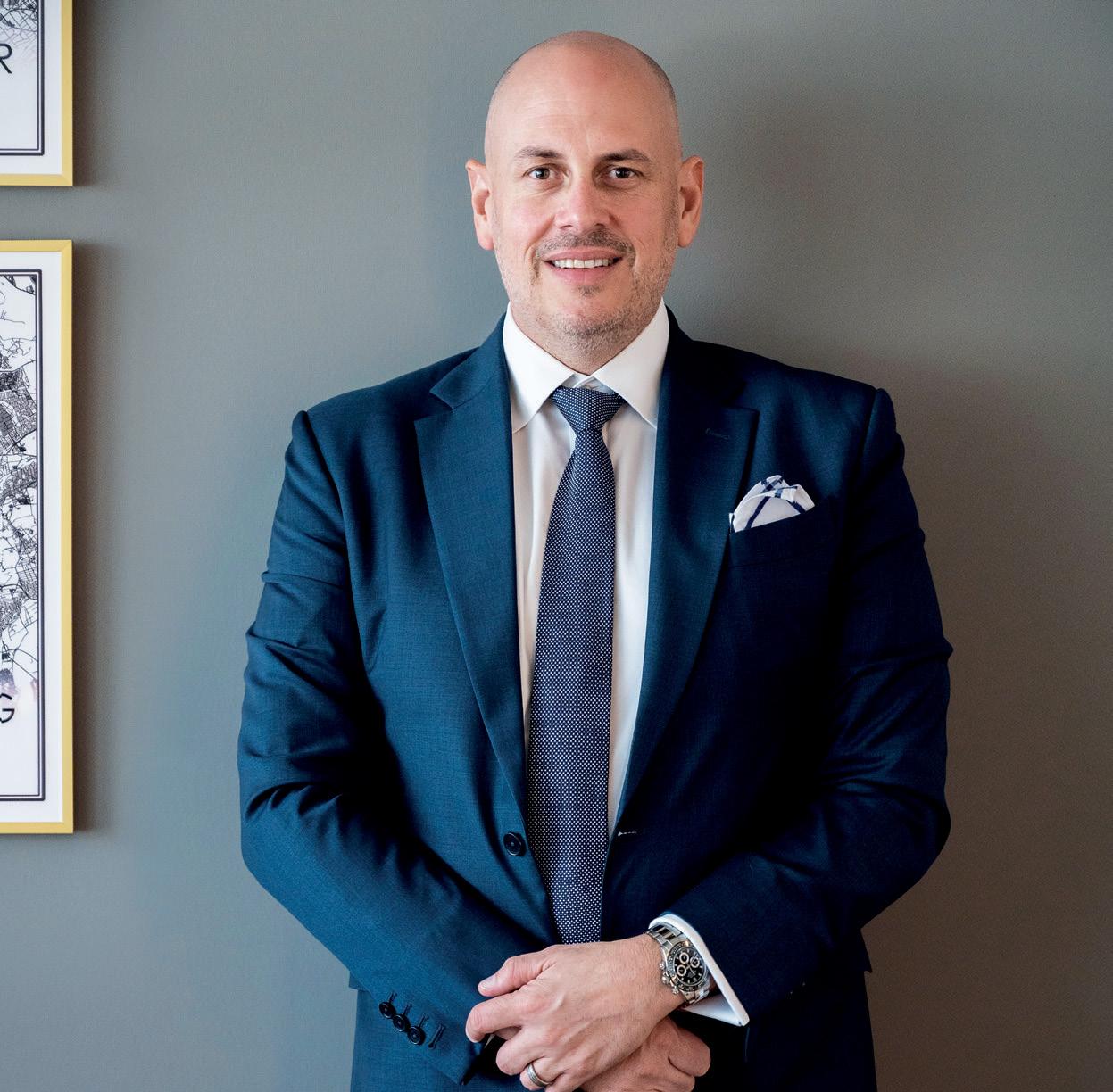
The 100th Issue
In Practice
“We Maximise the Opportunity”
With the UAE one of the world’s foremost real estate markets, what are the touchstone factors influencing buyers and how do developers reach their audience? How is the sales process best integrated and how to profitably leverage buyer psychology? To get the answers, Paul Godfrey spoke to Sean McCauley, CEO, The Devmark Group…
Empowerment The DNA of Leadership

There are sound scientific grounds for arguing that men and women are ‘wired’ differently; so it’s time for businesses to ditch the urban myths and leverage the contrasts in their management models and expectations. Personal development coach and corporate trainer Neetu Choudhary shares her insights.

The 100th Issue meconstructionnews.com Contents | 01
In Practice
12 31 18
A Focus on Quality
Middle East Consultant spoke to Adam Smith, Managing Director - Polypipe Middle East, about the company’s solutions for high-rise, residential and commercial and the challenges and opportunities of the regional market…
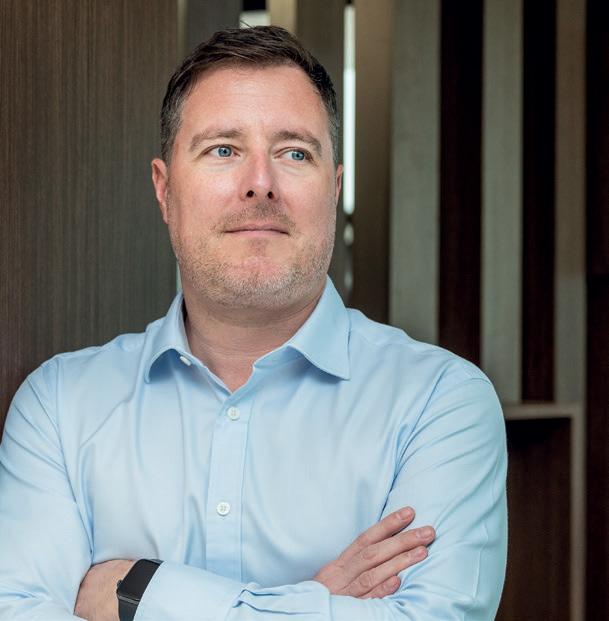
“If you don’t know, ask”
Global real estate titan JLL is well-known for its highly detailed and impactful market reports. How are they put together, what are the priorities and what does the data tell us about market differentiation? Laura Morgan, Market Intelligence Lead MEA, Project and Development Services, JLL explains…


Lighting as a Basic Human Right
While factors such as advances in LED technology are making Sustainability a partially-achievable goal, still larger issues lie in wait for the lighting industry and its social implications. Maria Dautant, Senior Associate, HLB Lighting, investigates…
Facing the Challenges
What does it mean to be a young Saudi woman working in project management? Nour Albilal, Graduate Project Manager, Compass Project Consulting, gives an insider’s view…

The 100th Issue meconstructionnews.com 02 | Contents
Site
On
In Practice
Technology
48 In Practice
40 22 26
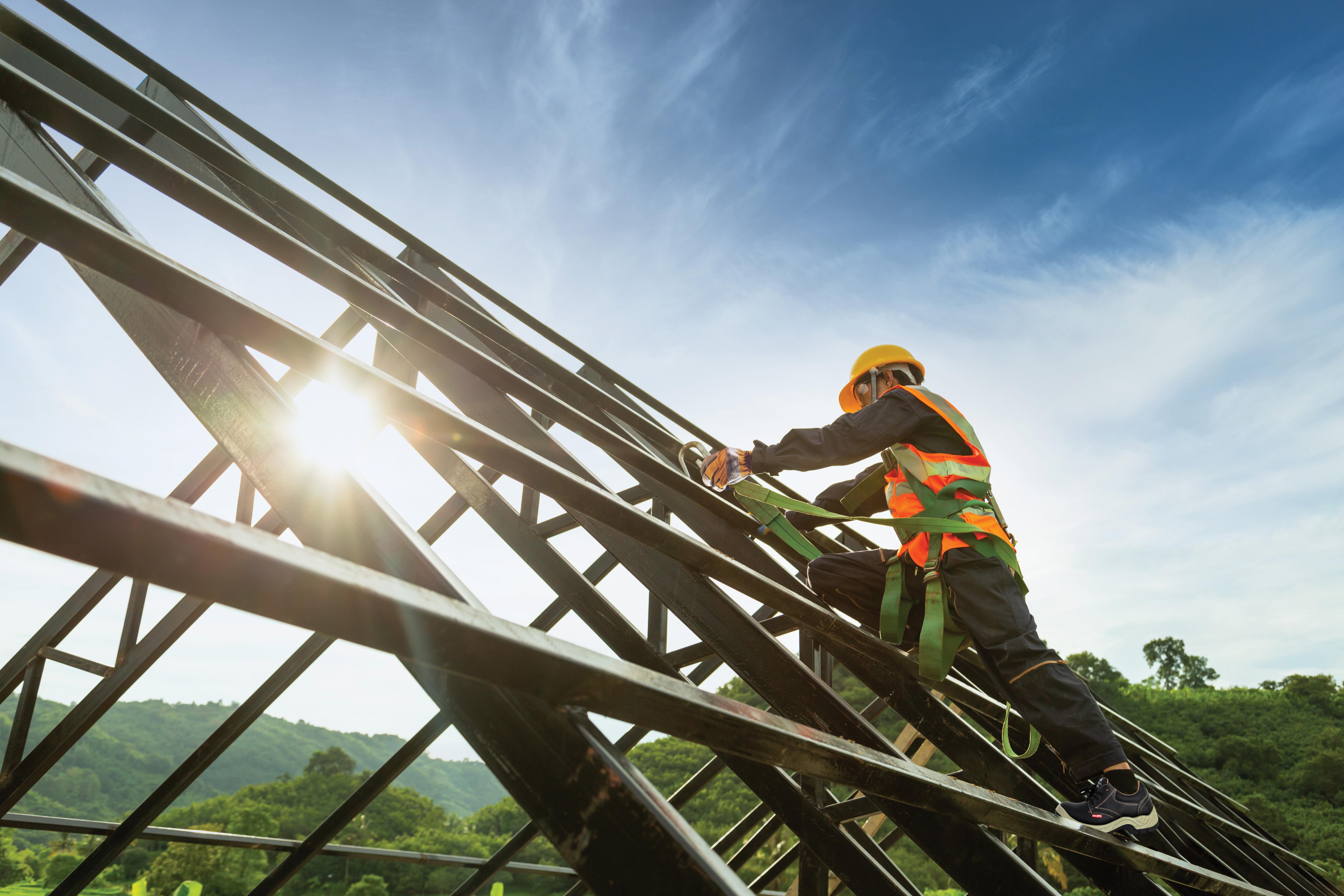
From ED&I to C-Suite…
It’s probably the case that ever since the Washington Post uncovered the Watergate scandal in 1972, every editor has in some way wanted their magazine to achieve something really big.
As we now celebrate the 100th issue of Middle East Consultant, while we’re not in the league of a north American broadsheet lobbying for change on a national scale, we can with considerable pride say that, in addition to continually lobbying for best practice and excellence in project governance, we have been:
• The first to launch a large-scale event dedicated to gender imbalance in the construction sector - The Women in Construction Summit (now called Equality, Diversity & Inclusion)
• The first to launch a Constructionspecific Consultant Awards - the Middle East Consultant Awards
• The first to launch a student-specific Awards for Architectural graduates - The Future Talent Awards (which this year will be bigger and better, as The Young Architect Awards)
On the other hand, even with this style of portfolio, we are only as good as our last
event, and I actually believe that a great testimony to the power of Middle East Consultant was the great success of our recent closed-doors round table, The C-Suite. Here, on 14th March, we brought together eight top CEOs from the areas of project consultancy, dispute resolution, law and architecture, and asked them to converse under the ‘Chatham House Rule’ - whereby when the event is written-up and published, comments cannot be attributed to individuals. Needless to say, the promise of utter confidentiality sparked some great (and sometimes quite astonishing!) discussion - and the overall thread and conclusions will be published online at the end of March. I firmly believe that the value of this magazine and the brand it represents is best described by the ability to bring together and support an extraordinary and ground-breaking discussion of this kind - and it is indeed very apt that it took part in tandem with our 100th issue.
Here’s to the next 100 issues - and to your being with us as part of the strongest construction consultancy network in the GCC.
Group
MANAGING DIRECTOR
RAZ ISLAM raz.islam@cpitrademedia.com
+971 4 375 5471
MANAGING PARTNER
VIJAYA CHERIAN vijaya.cherian@cpitrademedia.com
+971 4 375 5713
DIRECTOR OF FINANCE & BUSINESS OPERATIONS
SHIYAS KAREEM shiyas.kareem@cpitrademedia.com
+971 4 375 5474
PUBLISHING DIRECTOR ANDY PITOIS andy.pitois@cpitrademedia.com
+971 4 375 5473
Editorial
EDITOR PAUL GODFREY paul.godfrey@cpitrademedia.com
+971 4 375 5470
Design
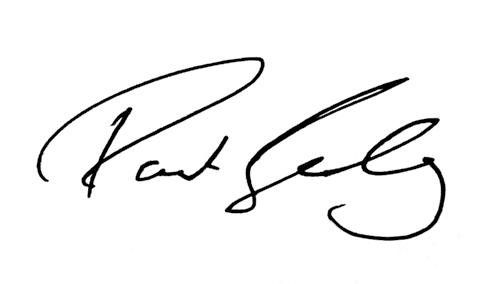
ART DIRECTOR SIMON COBON GRAPHIC DESIGNER PERCIVAL MANALAYSAY
PHOTOGRAPHER MAKSYM PORIECHKIN
Circulation & Production
DATA & PRODUCTION MANAGER PHINSON MATHEW GEORGE phinson.george@cpitrademedia.com
+971 4 375 5476
Marketing & Events
EVENTS EXECUTIVE MINARA SALAKHI minara.s@cpitrademedia.com
+971 4 433 2856
SOCIAL MEDIA EXECUTIVE DARA RASHWAN dara.rashwan@cpitrademedia.com
Web Development
ABDUL BAEIS UMAIR KHAN
FOUNDER DOMINIC DE SOUSA (1959-2015)
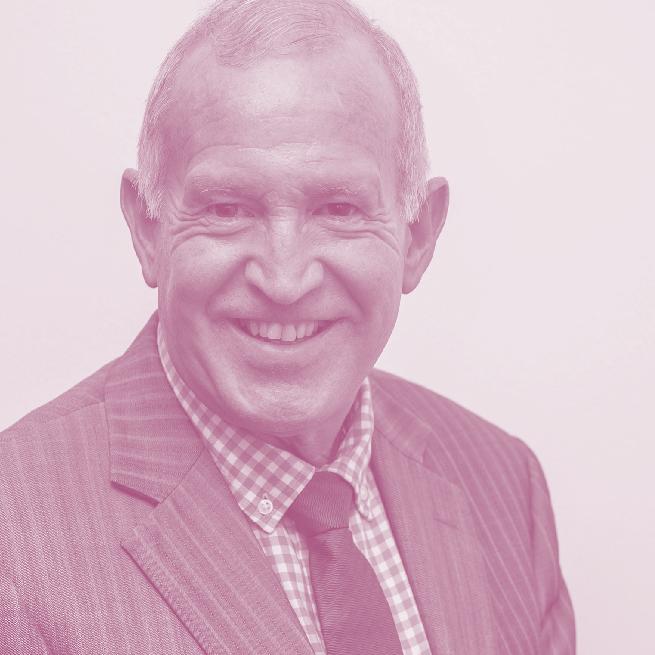
The 100th Issue meconstructionnews.com
04 | Welcome
Published by The publisher of this magazine has made every effort to ensure the content is accurate on the date of publication. The opinions and views expressed in the articles do not necessarily reflect the publisher and editor. The published material, adverts, editorials and all other content are published in good faith. No part of this publication or any part of the contents thereof may be reproduced, stored or transmitted in any form without the permission of the publisher in writing. Publication licensed by Dubai Development Authority to CPI Trade Publishing FZ LLC. Printed by Al Salam Printing Press LLC. CPI Trade Media. PO Box 13700, Dubai, UAE. +971 4 375 5470 cpitrademedia.com © Copyright 2023. All rights reserved.
Editor, Middle East Consultant C M Y CM MY CY CMY K

LATEST NEWS FEATURES
CONSTRUCTION
Marriott joins forces with Neom to open three properties

FINANCE
Saudi mining titan awarded DIFC captive license
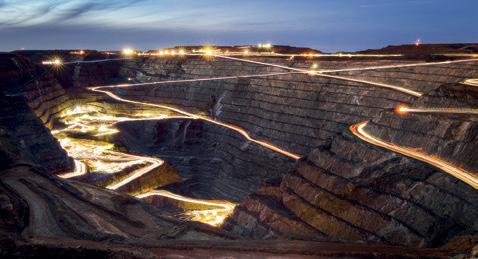
PROPERTY: Real estate outlook positive in Dubai and Saudi Arabia

CONSTRUCTION
Deyaar appoints main contractor for $140mn luxury residential project
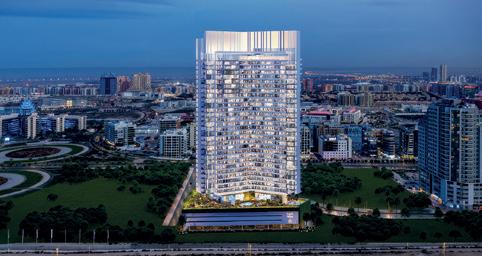
INTERVIEW: Women in Construction profile – ACCIONA’s Adelaida Fernandez
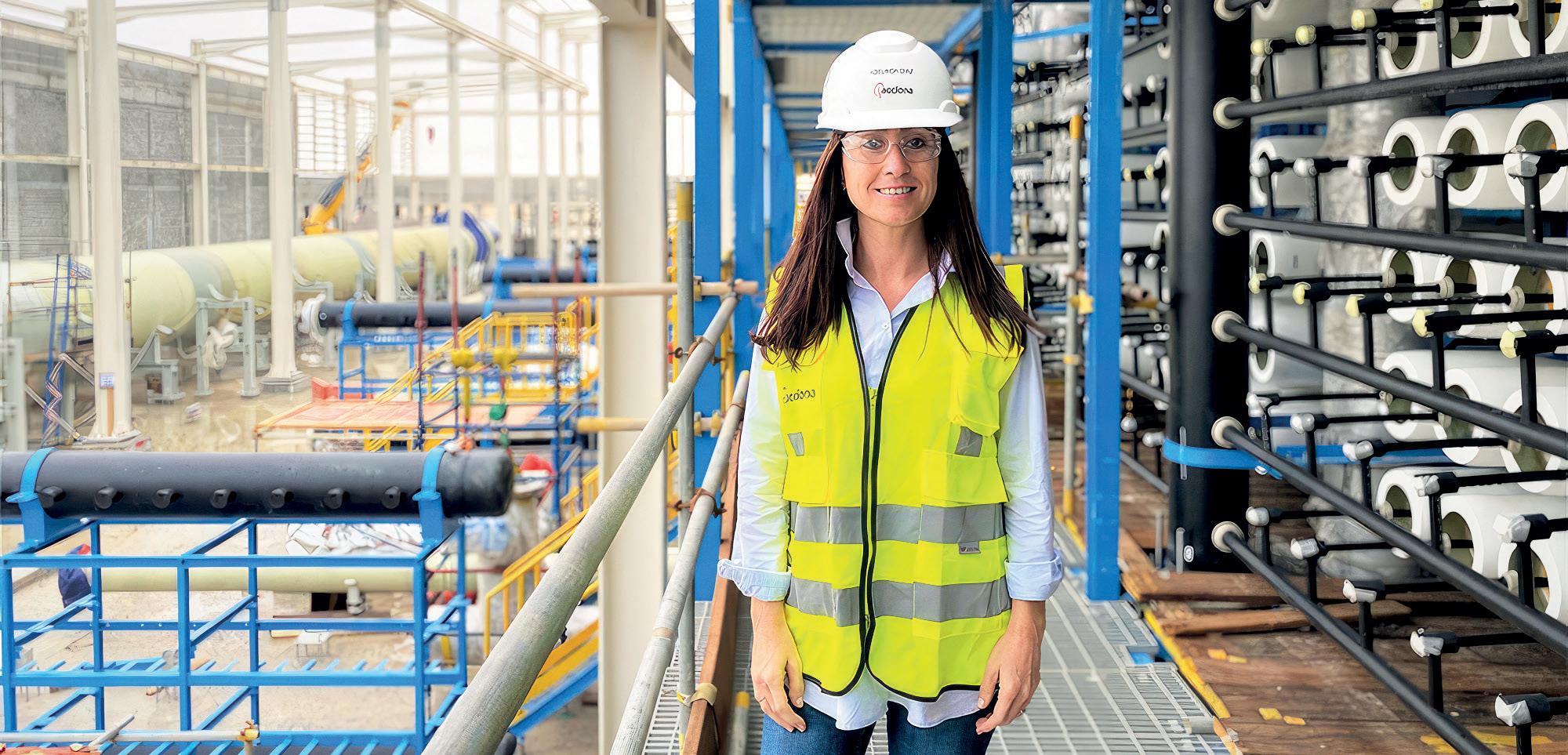
PROPERTY
Over US $1.36tn in real estate projects planned or underway in the GCC says CBRE
FINANCE
Acwa Power JV closes financing on $8.5bn green hydrogen project in Neom
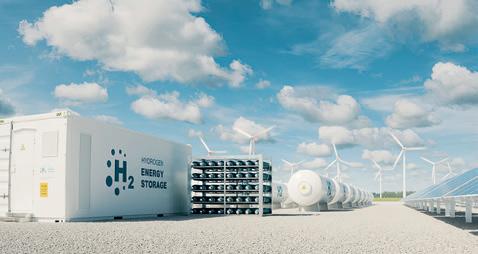
INTERVIEW: Infrastructure, healthcare and hospitality to drive GCC construction in 2023

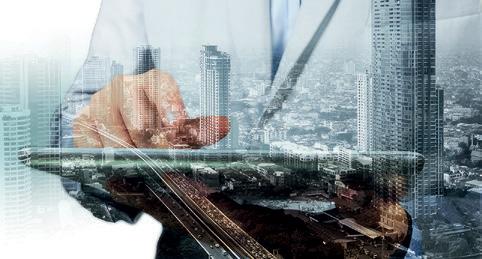
The 100th Issue meconstructionnews.com 06 | On Topic
PROPERTY
Saudi Arabia’s NHC launches
Al Fursan Suburb in northeast Riyadh
The new suburb will offer a ‘new concept of housing and modern styles that carry the spirit of architectural originality’

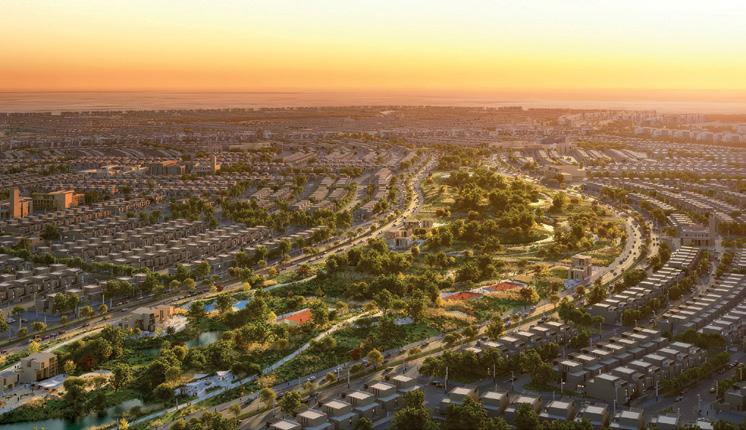

CONSTRUCTION
Mawani and Maersk break ground on $346mn logistics park
The comprehensive logistics zone at the Islamic port of Jeddah will support the growth of the logistics industry

MOST POPULAR
SUSTAINABILITY
TECHNOLOGY
Abu
CONSTRUCTION
Emirates to build $135mn advanced training facility in Dubai
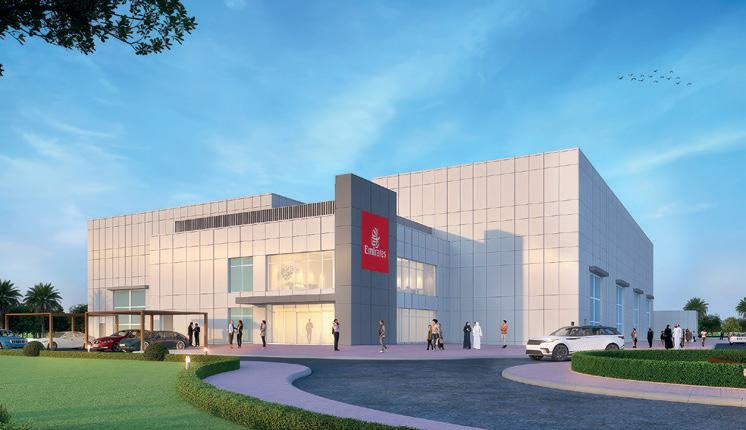
The facility will commence training its first batch of A350 pilots by June 2024
PROPERTY
Taraf launches ‘Luce’ on the Palm Jumeirah

‘Luce’ is Yas Holding’s entry into the emirate’s pre-eminent real estate neighbourhood
FINANCIAL
PIF invests $1.3bn in Saudi construction firms

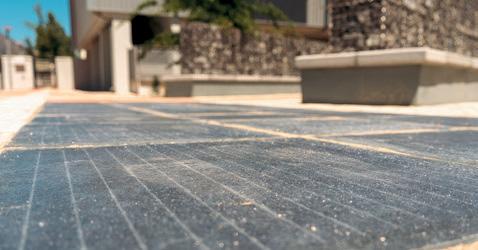
Move set to encourage companies’ regional and international expansion and boost supply chain strength in the Kingdom

BUSINESS
Dar Group acquires Canadabased building analytics solutions provider

CONSTRUCTION
SLG
The 100th Issue meconstructionnews.com On Topic | 07
FEATURED NEWS
ALEC Energy partners with Solar Earth to bring pavement photovoltaic solution to GCC
Dhabi University unveils 3D Concrete Printing Research Lab
PROPERTY
Azizi extends Kludi partnership for developer's Park Avenue projects
Group to build US $55mn facility in Dubai Industrial City
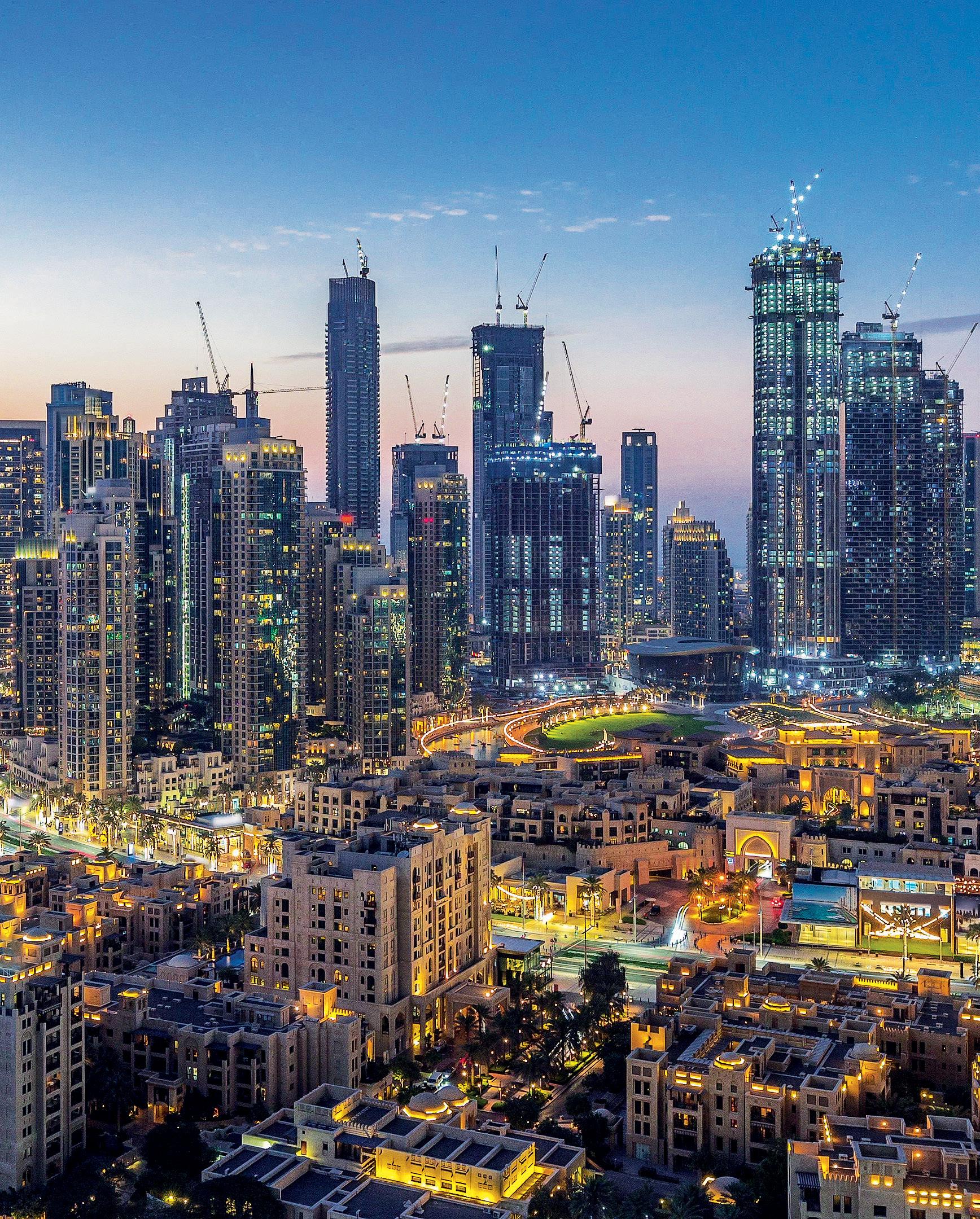
meconstructionnews.com The 100th Issue 8 | On Topic
Construction Sector “Expected to Thrive”
upported by the UAE’s strong development agenda, Projects of the 50 initiative, as well as the subsequent focus on industrial, transportation, and energy infrastructure aiming to attract nearly $150 billion in foreign direct investment by 2030, the country’s construction sector is expected to thrive at an encouraging pace. Global Data indicates that the sector’s growth output is slated to increase by over 3.0% year-on-year.
According to Emirates NBD Research, Dubai’s construction sector performed moderately throughout 2022, with business activity remaining high against conservative new work growth. The index rose 2.2


points from November 2022 to 55.4 in December, after averaging 51.0 during Q3. The December index was the highest among Dubai’s travel and tourism, wholesale and retail, and private non-oil sector indices.
Amid sub-sectors, the residential segment maintained its upward trend, with 44,000 units delivered in Abu Dhabi and Dubai since 2022. Furthermore, flagship projects such as Expo 2020 Dubai, and the Museum of the Future, coupled with a strong pipeline entailing the opening of Sea World and the Natural History Museum in the capital, continue to aid the ongoing recovery of the tourism and hospitality sector while snowballing on the country’s cultural project investments.
In addition, with the UAE government announcing their federal budget expenditure of over 252 billion Dirhams between 2023 and 2026 in October 2022, the largest proportion, 39% was allocated to the social development and benefits sector. Therefore, catalyzing future construction development through highest levels of social welfare, healthcare, education, economic
The 100th Issue meconstructionnews.com On Topic | 9
Global real estate market-maker JLL believes that price stabilisation, evolving trends, and the UAE’s resolute development goals are set to infuse a wave of optimism within the construction sector
3% 60% 2%
environment enhancements and investment infrastructure within the country.
Besides, another major factor fueling the growth of the construction industry is the improvement in oil prices which averaged for $100 per barrel, further supporting the GDP momentum which was estimated to grow by 7% in 2022. Thus, offering oil producing nations like the UAE opportunities to fund economic diversification through development transformation.
In terms of projects, according to MEED Projects, the UAE held a 13% market share with a recorded $19 billion worth of project awards against an overall MENA total of $142 billion in December 2022, compared to $187 billion in 2021. With regard to the value of project awards, the construction sector accounted for 60% of it, with residential, mixed-use, cultural, and commercial as the leading segments.
Laura Morgan, Market Intelligence Lead MEA at JLL MENA said: “On the heels of projects such as District 2020, and the unveiling of Dubai Economic Agenda – D33, improving oil prices, anticipated growth of sub-segments, combined with the market
offering a certain level of comfort owing to price stability, we are optimistic that the construction industry will continue to rebound significantly in 2023. That said, evolving trends such as sustainability, technology, and innovation will become key tenets shaping the sector, especially in light of it playing a significant part in achieving the UAE’s vision strategies.”
JLL’s market intelligence data obtained through discussions with local contractors identified that global economic volatility in the first half of 2022 created challenges within the local construction market in relation to delivery lead times and instant price increases, with suppliers reluctant to guarantee prices for extended durations.
Construction materials linked to aluminum, such as façade systems, Rebar, and MEP elements like generators and semi-conductors, saw the greatest impact in connection with delivery shipping time, leading to financial bearing and contractors citing the need to micromanage the supply chain to mitigate risks and safeguard project programs, budgets, as well as cash flow.
However, improvements were observed between Q2 and Q4 2022, indicating that price peaks may have passed; that said, price increases continue to be a significant risk due to the immediate effect economic forces can have on the construction sector, as evidenced by trends since 2020. Therefore, contractors and developers are proceeding with caution.
The 100th Issue meconstructionnews.com
10 | On Topic
With more Design and Build-type projects making their way into the UAE market, there is likely to be an upward trend of the best value with a greater emphasis on technical compliance over lower cost ”
The construction sector is expected to grow by more than 3% y-o-y, according to Global Data
The sector accounted for 60% of the total value of projects awarded to the UAE, with residential, mixed-use, cultural, and commercial emerging to be leading segments
In terms of tender price inflation, a 2% yearon-year increase is expected in 2023, driven by the estimated project pipeline value correlated to future demand
KEY TAKEAWAYS
Future construction costs will be balanced against the local market and global economic factors. While commodity and other construction material prices are softening, the MENA construction sector is strong and reliant on material imports from outside the region, which in turn could attract greater costs. Therefore, mitigation strategies are high on the agenda intensified by volatile market conditions and rising construction material prices of which the industry witnessed a price peak in Q2 2022.
According to a survey conducted by JLL with local contractors in the UAE during Q2 and Q3 2022, the main risks within the construction industry impacting business operations today are price fluctuations within the supply chain leading to declining enquiries, followed by bonding requirements, reduced competency, and labor shortage, which also entails a gap in the market for a greater supply of MEP
contractors, cashflow / non-payment, and amended construction contracts.

When it comes to client demands, lower pricing continues to play a key role in the fate of traditional projects. With more Design and Build-type projects making their way into the UAE market, there is likely to be an upward trend of the best value with a greater emphasis on technical compliance over lower cost. The participating contractors also stated that they are aware that the price must fit a developer’s financial model, resulting in consistent pressure to align contractor prices with the approved budget.
In terms of the rising petition for sustainability within the sector, the majority of contractors underlined that sustainability requirements are frequently addressed during the design process, which is often Estidama or LEEDfocused, while others emphasized that increased demand for sustainability is
met through operational green protocols, the implementation of modern methods of construction, evaluating construction operations, educating and training staff, assigning an internal specialist and sourcing alternative products by supply chain evaluation.


Pertaining to tender price inflation, it is estimated that it has increased by an annual average percentage change of 3.5% in 2022 compared to the initial forecast of 2% to 5% pegged from increases during Q2 to Q3 2022. The upsurge is representative of market factors linked to commodity and construction material price fluctuations, evaluated from tender return cost data, market testing, and commodity price trends. Year-onyear growth of 2% is anticipated in 2023 associated with the estimated project pipeline value correlated to future demand and JLL’s intelligence gathered from market sources.

The 100th Issue meconstructionnews.com On Topic | 11
ALWAYS CHECK FOR THE LABEL! IS YOUR DUCT UL 181 LISTED? UL 181 Standard for Safety www.kingspan.com/ae/en Building better together with Kingspan Insulation’s UL 181 Listed PalDuct Phenolic and KoolDuct for a dynamic industry! @kingspaninsulationme @kingspaninsulationme Kingspan Insulation info@kingspaninsulation.ae
ean, we’ve all seen the glowing statistics from the market-making giants about the region’s buoyant property market. But even in this market, is it the fact that real estate is sold, not bought?
“Firstly, to properly answer your question, let me explain a little more about the often complicated processes that underlie the way developers actually sell their real estate; and on the way, let me describe exactly what we, The Devmark Group, do as a business.
“I’d like to believe that we are an exceptionally unique company. Our name reflects this - it’s an abbreviation for ‘Development Marketing & Sales’, and that phrase goes to the ethos of what we actually do. If you look at the line-up of directors
here, we were all in some shape or form working in the same industry as either colleagues or competitors; but we had this vision of forming the first company in Dubai working exclusively in the development marketing space.
“We all felt there was a niche and a gap in the market, and we wanted to form a company purely representing property developers. Other companies - including some of the biggest in the market - do a number of different things, such as property marketing, leasing, surveying, cost management, and so on. But they don’t really focus purely on sales of new project launches - and that is the only thing we do. We’re specialists in that niche.
“Very simply, there are five stages to how we work. Stage One, we conceptualise our strategy based on market research: we consider exactly what amenities and features the development should have and what the mix of units should be; who is the primary customer; and who are the secondary and tertiary customers? Then we ask how are you going to go to the market? There are a plethora of questions that need to be asked,
“We Maximise the Opportunity”
and what we do is assimilate all the answers; we take the objective of formulating a strong sales strategy very, very seriously. Questions like ‘What is selling well and what would sell well?’ Or ‘what does the market want and what does the market need?’ Answering these is central to what we do.
“Step Two is the Brand Marketing. We will do all the marketing around the development. Create a unified brand, its positioning, design and publish all the brochures, deliver the websites, the marketing video - the whole suite of marketing collateral. Essentially, we conceptualise the entire marketing plan and strategy. You don’t need to go off and deal with a whole bunch of different marketing companies: we package the entire process, end to end.
“Step Three is the Customer Journey. By this, we mean ‘how is the buyer going to interact with the developer?’ Are they going to come along to your sales center, and if so, how do they get there and who brings them? Do they know enough about the development and the community? When they are in the sales center, is there a comfortable seating space for them? If they are based overseas, how can we present the project effectively? We map out the whole customer journey.
“Step Four is the Technology and how it’s deployed. These days, practically every company has to have some level of focus on technology. Why? Because it’s very important that a developer should be able to showcase its projects online 24/7. Our technology is such that a broker sitting in Germany, for example, can access our project site in the middle of the night, view all the brochures and floorplans, see live availability of inventory and then go on to initiate the sales process. There doesn’t need to be any specific window in time or place: our
meconstructionnews.com The 100th Issue
12 | In Practice
With the UAE one of the world’s foremost real estate markets, what are the touchstone factors influencing buyers and how do developers reach their audience? How is the sales process best integrated and how to profitably leverage buyer psychology? To get the answers, Paul Godfrey spoke to Sean McCauley, CEO, The Devmark Group…
Sean McCauley, CEO, The Devmark Group.
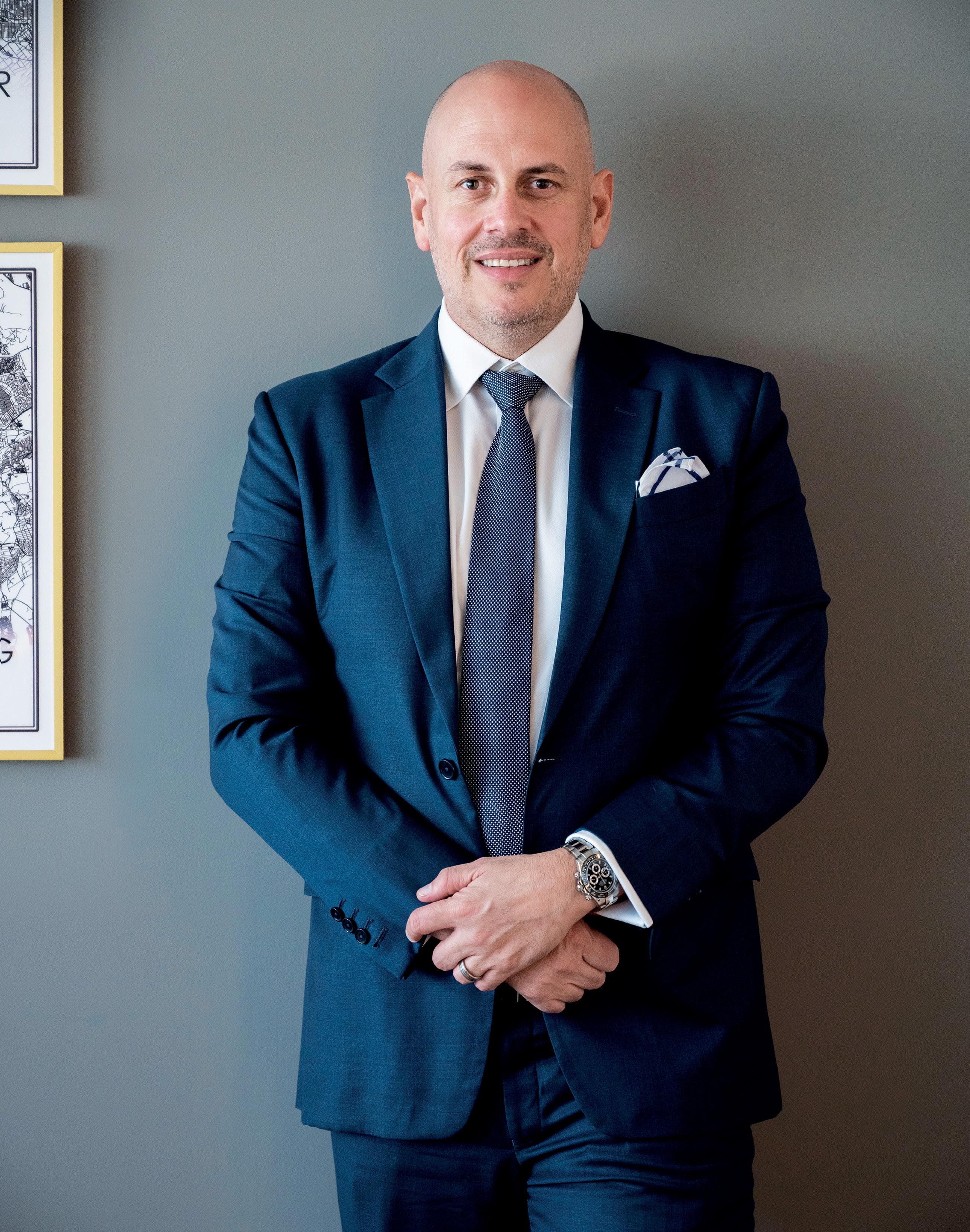
The 100th Issue meconstructionnews.com In Practice | 13
technology is geared totally around broker needs, 24/7 on the tap. And we’ve got tools for the developer, too, so that they can see the sale rate per sq.ft. that they are achieving, customers’ expressions of interest, buyer demographics and all the trends going on around them in the larger market.
“Step Five is our unique attention to Sales Distribution. If you’re going to sell hundreds and hundreds of units for billions of dirhams, you need a very wide and comprehensive sales distribution network. So what we’ve done is adopt a B2B approach, where we have 13,000 estate agents and brokers in our network. Yes, we put a team on the ground for the developer which are dedicated to the project - these are the sales development experts and they control the viewing and the narrative; but the buyers come - they’re funneled in from - that network of 13,000 estate agents.
“This is why we founded the company in the first place. We believed that developers needed a ‘one stop shop’ that provided multiple services along the value chain.
“Now, back to your question. There are really two parts to the answer: there is built property and there is off-plan. For built property, there’s certainly a lot of buyers out there. But for off-plan, there’s nothing to see. You’re selling a dream at times and this is where all the marketing science we provide really plays its part and delivers a complete narrative. When it comes to off-plan, the sales process can be immensely complicated, because you have three types of buyer: firstly, the end-user; then the investor; and then you might have a speculator who thinks “I’ll take a punt and then ‘flip’ this for a quick return in a year or two when the market is looking good.”
“How do you psychologically interact with these different styles of buyer? They’ve all got very different and unique ‘hooks’. So,
what sits behind reaching them is a very complex matrix - and this is what we take care of. At the end of the day, we’re a highly specialised consultancy and we respond to the fact that, for the most part, real estate has to be sold, not bought.”

At what stage are you involved in a major project - are you brought in ‘post facto’, or engaged from the earliest stages?
“We really want to be involved from the earliest possible moment - ideally, from first origins. First prize for us is when we sit in with the developer at the project conceptualisation stage, and where it’s a collaborative process between us, the developer and the architect. We want to be able to tell the developer about the range
of amenities and facilities that the market suggests the project should have: but you can only do this when you are involved right from the start. When it’s already built, it’s probably already too late to advise on factors like this, no matter how important they might be.”
How do you see the major trends here in the GCC in terms of style of community? Are we increasingly looking at the ‘15-minute’ city, with micro community hubs, or will we see a return to super-tall skyscrapers?
“There is definitely a trend under way for the 15-minute community. It’s difficult for a developer to maximise their GFA, or builtup area, but some of the projects we are working on now really epitomise this idea of a15-minute community. It’s what people
The 100th Issue meconstructionnews.com
14 | In Practice
The Devmark Group provides an integrated conduit combining all necessary sales and marketing elements bringing together one of the world's most burgeoning industries.
want. Particularly after emerging from the pandemic, where people missed this sense of togetherness, they now want it back - and perhaps more than ever.
“The pandemic has made people ask a lot more questions about where they live, and how. For example, you might live in a tower block and ask: “is there a boardroom here, so that I can have meetings without my children being around?” Or maybe you live in a newly-built community, and you wonder if there’s a community centre that has a raft of family amenities? ‘Live, work and play’ is a very important motto now, and a developer really needs to have good, solid answers about whether there’s a sense of community and how best to align both work and lifestyle opportunities.
“Have we decided against going super-tall?
I’m not sure we’ll soon see a return to the super-super-tall towers, because they have very high service costs and massive expenses and resources tied up around their facilities provision and their infrastructures. But I do think we’ll always see skyscrapers as such, albeit with more of an emphasis on lifestyle aspects - like having a floor dedicated to a club lounge, or having in-house cinema, or sky gardens: all the elements that build a sense of lifestyle and community, but in a vertical setting.
“Sometimes, though, if you’re a developer, you have no choice but to go ‘up’. Say you buy a plot of land in Dubai Marina, for example, which is extremely developed, so you’re going to go as high as possible in order to recoup your costs and drive maximum value. So I always see the potential for skyscrapers in the portfolio.”
To what extent are your buyers interested in Sustainability; and will they pay a premium to have it?
“Very interesting question. Are the majority of buyers asking for sustainability? No. But is the trend increasing? Yes. The momentum is gathering pace. So for example, in one of the towers we worked on, they didn’t just have one refuse chute, they had three. One for metals, one for glass, and one for general. Simple, right? So no-one had to then ferret around and separate everything out; it was all there at the bottom of the building in three separate silos.
“Another one of the projects we are working on right now has landing pads for
drone deliveries - looking forward to a time when we’ve moved away from bike and van deliveries because they’re so costly to the environment. This same development has many sustainability features, too, such as regenerative water and solar panels. So the change is most definitely happening.”
What do you see as the main risks currently confronting the sector?
“The market is very healthy in Dubai at the moment - clearly, very buoyant. But the question is, how do you manage supply? Whilst we have healthy demand from buyers, it would be irresponsible of developers to launch too many projects into the market - that would be the biggest risk. While the market is essentially strong, you can’t throw unlimited supply at it. That’s when you start to put a pressure on pricing, and so on. For me, it’s just about the supply.”
Is it really the case that it’s largely the influx of wealthy individuals from eastern Europe that is now driving the boom in ultra high-end villas and apartments?


“Well, there is certainly an influx, but I wouldn’t say it was only people from the CIS countries. What we are seeing is a greater number of wealthy people from all around the world - perhaps Europe in particular. These want a better standard of living in the short, medium and longer term - with lower taxation for example, and also better value across their investment portfolio.
“Plus, in terms of what spurred this trend, we all know that the UAE was phenomenal during the pandemic, and a good many people came here then. It really opened their eyes to what can be on offer here and led to them relocating away from many of the issues they saw in their home countries - like high taxation, disorganised politics and the like.
“So now, we again have to ask the question: ‘what is the psychology prompting sales to this market and how can developers best meet its needs? This is where we provide a really integrated solution: we ensure that developers can maximise this opportunity - which as we know is currently one of the best in the world.”
We all felt there was a niche and a gap in the market, and we wanted to form a company purely representing property developers”
The 100th Issue meconstructionnews.com In Practice | 15
About the
Future of Architecture Summit
The third Future of Architecture Summit (FOA) will take a thoroughly modern and tech-inspired look at tomorrow’s directions for leading-edge architecture and design.
The event will be driven by dialogue around two key themes in particular: firstly, the use of AI-led generative software (such as Midjourney and DALL-E), and its ability to place leading-edge design in the hands of engineering companies – begging the question: ‘will the future need architects at all’? Then, the Summit will assess if the next generation city is high-rise and super-tall, or all about the new, communityled concepts of ‘the 15-minute city’ – as recently proposed as the future of Dubai, for example.
2023 Live Event
The third Future of Architecture Summit will take place in Dubai on 14th June 2023.

Insightful Discussions
The one-day conference will feature high quality dialogue and provocative discussions; we will be hosting leading names from across the region, providing a terrific opportunity to see how the realities behind the major debates are progressing.
Participation Opportunity
Participate by exhibiting, creating a workshop, join a panel discussion or run a demonstration – whichever way – it’s a lucrative platform to get connected.
Contact us now to learn more about this opportunity to interact and connect with regional industry decision makers and influencers.
14 June 2023
/ UAE
DUBAI
Get in touch Contact us Content Paul Godfrey | +971 55 472 9717 paul.godfrey@cpitrademedia.com Sponsorship Andy Pitois | +971 4 375 5473 andy.pitois@cpitrademedia.com
Are Architects becoming replaceable?
The growth of Smart, AI-led software is putting design in everyone’s hands.
2023
Agenda
We believe content empowers us and our speakers seek to provoke insightful debate and shed light on current trends, challenges and solutions.


Tools
Architect or Engineer?
Engineers are now armed with the intuitive and creative power traditionally belonging to Architects – and what’s more, it comes fully loaded with cost controls, too.
Complimentary Register now
Register for free and stay connected
Lateral or High?
Community concepts
With more and more talk of building cities where everything is only a 15-minute trip away, does this mean that traditional neighbourhoods will replace super-tall buildings forever?
Materials
The new nano-constructables
Architects and designers have vast rafts of new materials to work with – and they’re all sustainable, whether the new neoorganic materials coming from aviation or the nano-weave of bio-degradables.
PRESENTED BY PRESENTED BY
PRESENTED BY
© 2023 CPI Trade Media. All rights reserved.
SUPPORTING PARTNER
2022 Event Partners
Date 14 Jun Venue Dubai Website 2023.foasummit.com
Empowering, Supporting and Delivering
orking on major, complex projects is what makes TBH Director, Christopher Nicolas tick. It is also one of the reasons why TBH established a presence in the Middle East some 15 years ago.
The scale and complexities of projects in the region, have allowed Christopher and his colleagues to draw on TBH's over 58 years' experience and the deep-well of data gained from working on over 8,000 projects, across a range of industries and services.

With offices across Australia, Asia and the Middle East, TBH is one of the largest privately owned, independent consultancies with an international footprint.
"TBH's expertise ranges from smallscale projects to large, multi-billion-dollar
programmes of works; and in fact, for me - a fascination with large-scale projects began early in my career - when I found myself seconded to work on the infrastructure overlay programme of works for the Sydney Olympics," Christopher explained.
TBH originally commenced working on the 2000 Olympics in 1993, after Sydney was successful in its bid to host the games.
“Our work”, says Christopher, “continued well after the games through to 2010, working on the overlay and legacy works at the precinct. This project is a great example of the scale and scope of TBH’s work on large-scale and challenging projects, which really lends itself to the projects we are currently working on in the UAE and Saudi Arabia.
meconstructionnews.com The 100th Issue
18 | In Practice
Established in Australia in 1965, TBH is a specialist in high-risk, large-scale, and challenging projects, providing project management services across the entire project lifecycle. We spoke to Christopher Nicolas, Director, TBH, about the company’s widening portfolio and highly evolved niche skillsets…
Christopher Nicolas, Director, TBH.

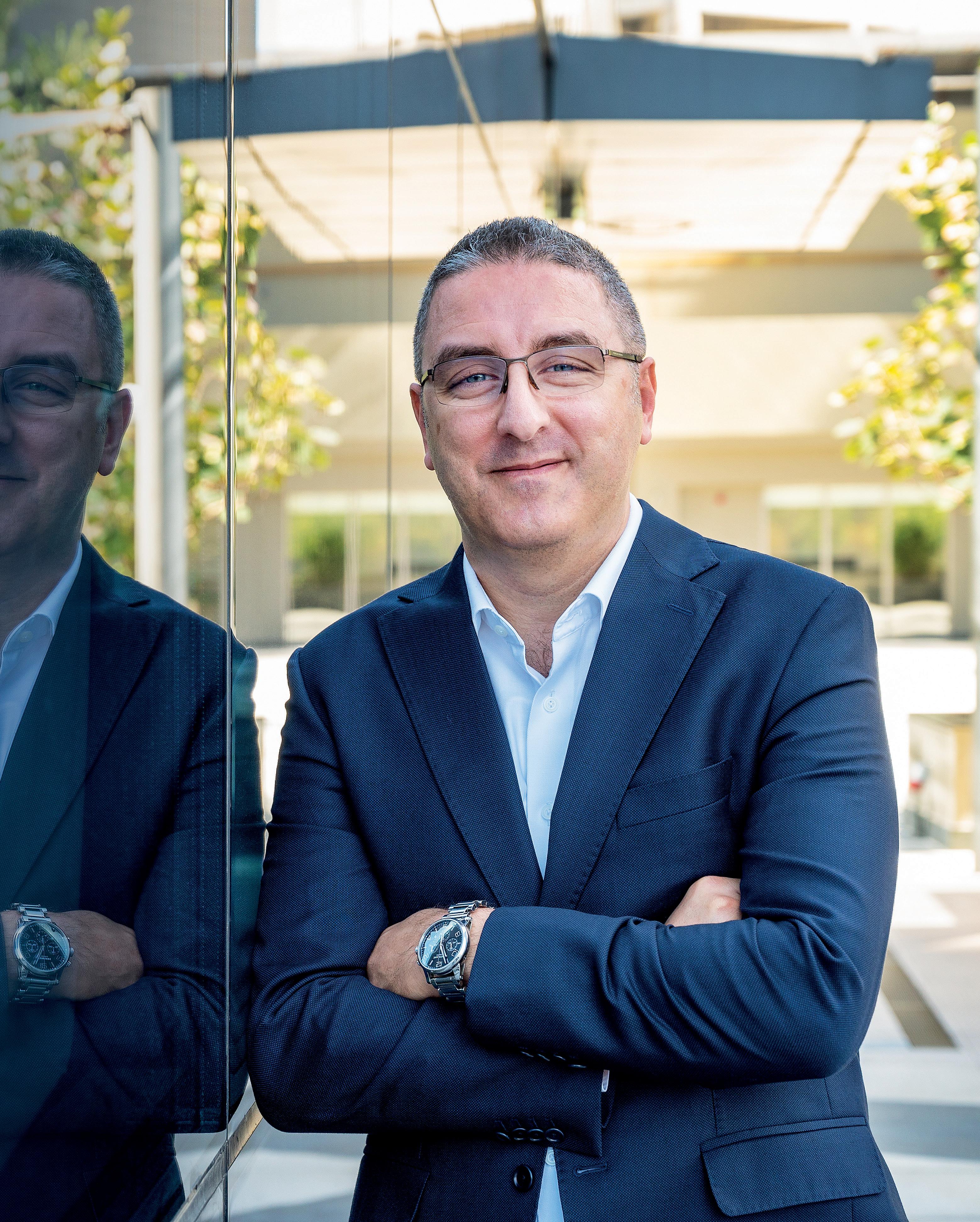
The 100th Issue meconstructionnews.com In Practice | 19
“We identified the UAE as potential international hub back in 2008, as expansion outside of Australia was a key part of our strategic plan. We wanted to be in places where it would be possible to secure key projects with leading clients, and to utilise our experience on large-scale projects. Since then, we have worked on numerous iconic and complex projects across all sectors in the Middle East, further solidifying our depth of experience and our thorough understanding of the intricacies of project delivery in the region.
“Now we see ourselves as having a ‘twin hub’ in the region, with our recently established Riyadh office, enabling us to expand on the Saudi projects we have been working on since 2010. The opportunities in Saudi Arabia are exceptionally exciting - and now we’re seeing new developments create transformational change on an unprecedented social scale. It’s no exaggeration to say even within a sixmonthly timeframe, you can see dramatic changes happening.
“So, for us, there was always the need to be in Saudi Arabia, and we see ourselves as having a ‘unified focus’ between the two nations.”
ABOUT TBH’S SPECIALIST SERVICES
With hubs in both the UAE and KSA, and with both countries at different stages in their growth journeys, how do you foresee TBH servicing projects in both these markets?
“TBH originally started out - and over 58 years later, still has a leading reputation for - providing services focused and centred on time-management. Although this still forms part of our core business, we have progressively expanded to provide complimentary service offerings, including cost and project management, dispute and risk management, and business advisory.
“Our expansion into other interrelated services has been thought-out and measured, allowing us to evolve into a multidisciplinary team with a difference. The difference being that irrelevant of whichever core service or services, we have been engaged to provide, our delivery model is such that our clients
benefit from the collective expertise within the business.
“Our team interrogate a client’s problems from a multidisciplinary approach to give them a more forensic, detailed interpretation and solution. In essence, we provide a holistic and considered approach to solving our clients’ challenges.
“The scope of our services means we are well placed and confident in supporting both markets, and our specific expertise in being experts in empowering, supporting and delivering projects lends itself to large
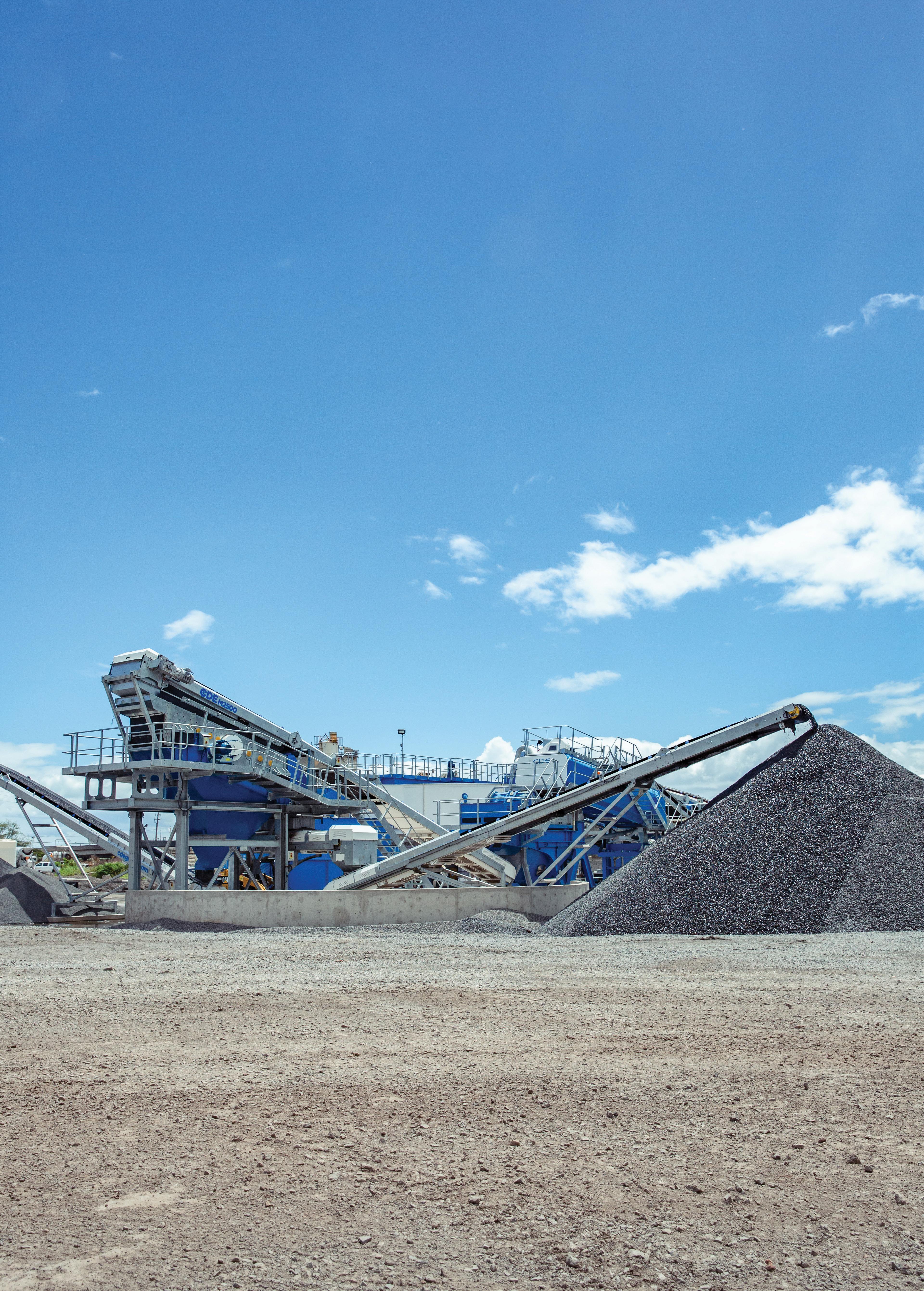
programmes. This is why we are particularly excited to be working in KSA and being engaged at the early stages on these massive programmes of work.”
STRATEGIES FOR THE FUTURE
“TBH is not a labour only provider. We deliver expertise in our areas of specialism, but we will not dilute the quality of our product just to increase headcount,” Christopher explained. “Having said that, the Middle East is a significant part of the overall growth plans for the Group, and our Middle East offices have expanded from a one-partner to a four-partner hub and consequently our supporting staff numbers will increase proportionately.”
Earlier this month, TBH welcomed two Senior Directors, Colin Fox and George Matta, who joined their Middle East operations, having relocated from TBH’s offices in Australia. Christopher continued, “Colin and George bring a wealth of knowledge and expertise which will help to strengthen our commercial, risk and claims and disputes services line in the region. They both have several years’ experience working on projects in the Middle East. This move is significant for TBH, and it really shows our long-term commitment to the region.”

The 100th Issue meconstructionnews.com
20 | In Practice
The opportunities in Saudi Arabia are exceptionally exciting - and now we’re seeing new developments create transformational change on an unprecedented social scale”
C M Y CM MY CY CMY K


ENGINEERED FOR YOU. Visit cdeglobal.com
RESULTS
ENGINEERED FOR
Our expert engineers design customised solutions that transforms natural sand and crushed rock reserves into high-value products for an exceptional return on investment. An integrated water management system recycles up to 90% of process water for immediate re-use in the system, significantly reducing footprint and maintenance of settling ponds
dam, do you believe the GCC presents unique challenges as a market - eg, given the fact that it is one of the driest climates on earth?
“One of the big factors that really differentiate this market is the very rapid rate of urban development. There’s a lot of new territory emerging all the time, and the construction sector faces the challenge of catching up to that rapid urbanisation. Even services aren’t immune - there are many new communities where perhaps the infrastructure needs to catch up. I can’t think of any other region in the world that faces that kind of race against time.
“It’s not necessarily the dryness as such that is the differentiator here. While it’s true that this is certainly a very dry zone, it’s not unique in that respect, and in fact shares many of the same challenges as areas such as Western Australia, for example. Plus, we see the environment is dynamic, and changing all the time: the more we ‘green’ our cities, the more rainfall we attract, and we are also busy cloud-seeding, which can potentially add 20% more rainfall. But even with the current state of affairs, there are a huge number of water management issues here, and we work substantially with the many local government authorities to deal with these effectively.
“There’s also another side to the story: if you look 25 years, 30 years, 70 years into the future, you have to ask what are the water management and supply issues then, when the population is perhaps 50% more than it is today? That’s where we need to be focusing right now.”
Tell us something about your solutions for preserving storm water supplies?
“This is another area where priorities are changing and we need to focus our
attention. For a number of years, there have of course been a range of storm water networks in place; some of these are what you call ‘positive’ networks, managing the flow of water away from the site, as you’d expect. But when you develop the area and create a larger built environment, you also dramatically increase the level of run-off - and of course, this needs to be a real focal point of effective water and site management. Add to this, the fact that increased rainfall will add a surcharge to these water volumes - and with cloud seeding in place more frequently, as we’ve said, this is set to increase. So when we look to the future - up to 50 years from nowwe can see a completely different picture for storm water management. Again, that’s what we really need to start planning for now.”
What about your work delivering drainage systems for the world’s tallest buildings? What are the unique drainage issues around super-talls?
“There’s no doubt that super-tall buildings pose unique challenges, and it’s important to see many of these in the context of a broader public health debate. It’s a strange discipline, public health: when you get it wrong, it’s incredibly difficult and incredibly costly to put it right.
“So firstly, if we’re looking at the challenges of super-talls, remember that many of the building codes date from a previous era - they were created many years ago - and were only designed for buildings of up to 20 stories. So, to overcome this shortfall, with most tall buildings we use a system caused ‘Active Ventilation’: this means creating an itemised and detailed plan - a ‘roadmap’ - to solve the building’s drainage problems at source, helping protect the people using these spaces. The higher the building, the higher the diversity of issues: for example, everyone will have different usage patterns floor-to-
A Focus on Quality

The 100th Issue
Polypipe - an international brand acclaimed for its award-winning water management systems - has played a major role in many of the region’s keynote projects, from the Atlantis
The Royal to Dubai
22 | On Site
Expo 2020. Middle East Consultant spoke to Adam Smith, Managing DirectorPolypipe Middle East, about the company’s solutions for highrise, residential and commercial and the challenges and opportunities of the regional market…
Adam Smith, Managing DirectorPolypipe Middle East.


The 100th Issue meconstructionnews.com On Site | 23
floor, so when you times that by 100, there are some very complex scenarios. Remember too that drainage is critical to the life and health of the building: blocked drainage can bring a multitude of problems, and some would even be life-threatening. So, what we do is try to balance out the various issues on a modular basis, with localising solutions that deal with issues close to point of need. There can’t be any ‘one size fits all’ approach, and so we break things down and use a modular approach. This lets us tackle the issues comprehensively, section by section, throughout the height of the building.
“From the residents’ point of view, with buildings getting higher, and accommodation often being 90 floors up, it’s also true that tried and tested technologies do exist to ensure that basic aspects are always provided for - like ensuring the optimum gradients and design codes are used for both the design and installation of the system. Obviously, without this, you can’t run the multiplicity of domestic devices such as washing machines, dishwashers, pressure showers and the like. It’s critical to have the right system in place from Day One to prevent any failures that could lead to serious health issues in future for the building residents.
“However, a common challenge with super-talls and skyscrapers is that we tend to let the layout lead the design, and so we get a totally different floorplan floor-tofloor. This can cause many problems, for example, with acoustics. A classic example is that you might hear the sound of a WC flushing right above your bedroom! Good architectural practice should tell you that you need to co-ordinate floor-to-floor to prevent these issues, which are as much acoustic and design challenges as they are to do with drainage. What’s more, it makes good sense logistically to tackle these issues: the kilometers and kilometers of pipe that we so often find inside these buildings simply isn’t necessary if you can co-ordinate properly.
“One of the challenges in our industry is that there are many highly qualified engineers, but not enough public health

specialists: so you can sometimes find that facilities like toilets and sinks can malfunction horrifically. Let’s say there isn’t always the tight ‘P’ in the MEP equation! One of the problems with drainage and water supply is that it’s always behind walls and under floors, so it’s all too easy to ignore it and not give it the right focus.”
Has Polypipe innovated in terms of the materials being used, and if so, how?
“We operate to the highest standards of BS and BS EN (British Standards European Norm) regulations. We see this as the minimum acceptable standard, but in other parts of the world, they might say this is the
The 100th Issue meconstructionnews.com
24 | On Site
If you look 25 years, 30 years, 70 years into the future, you have to ask what are the water supply issues then, when the population is perhaps 50% more than it is today? That’s where we need to be focusing right now”
maximum, preferred standard - the ‘Rolls Royce’ end of the market. But actually, it’s not - it’s what we should all be doing! That’s particularly the case given the public health issues that are so often involved. In terms of the materials, we use the most modern and sustainable materials appropriate to the application; we are also unique in this region in offering a lead-free PVC drainage system. Plus, these are all recyclable, encouraging us to focus on the sustainability credentials of the materials when making selections for future building.
“We’ve also introduced polyethylene systems, such as our Terrain FUZE high performance drainage solution, which is much cleaner and more sustainable. There
is also, again, no ‘one size fits all’ approach. Different zones of a building have different performance criteria. For example, in car park areas we may specify a robust solution such as Terrain FUZE HDPE drainage, so strong you could drive a car into it and it wouldn’t fail. Whereas above a bedroom or living room areas, you might want to focus more on acoustic properties rather than pure strength.”
What do you see as your major successes and projects here in the local market?
“I think the stand-out project in terms of scope and achievement in recent years is Dubai Expo 2020. We were able to work with a range of materials sourced in Abu Dhabi and then went on to create jobs here, via partnering with a local special manufacturer. We also tested a number of the systems here, in our in-house facility. I’d say that, all in all, for Expo, we were able to engage with the client years before anything was constructed, creating solutions that really contributed to protecting the downstream infrastructure and prevented localised flooding.
“Atlantis The Royal was another of our big projects, where we had great involvement at a senior level on a complex enterprise and worked with some household-name engineering and project management specialists. We also have projects like Jumeirah Gate, where we have installed the highest attenuation system - 74 floors up, near the pool (which is actually the highest infinity pool in the world!).”
Do you work with private households as well as developers?
“We will often work with developers on single villas, for example, our trial projects with Masdar City, or we can work on community projects with 1,500 units. You always have to keep in mind, though, that regardless of the scale of the project, there can be no compromise in public health: when it comes to drainage, everything has to be of the highest possible quality. Wherever people live - families, individuals
- there can be no compromise in keeping people safe and healthy. When designing solutions for large villa developments, it is vital to consider upstream and downstream impacts, which often results in larger, more expensive failures. Understanding where the water comes from and where it is going can lead to very different outcomes.”
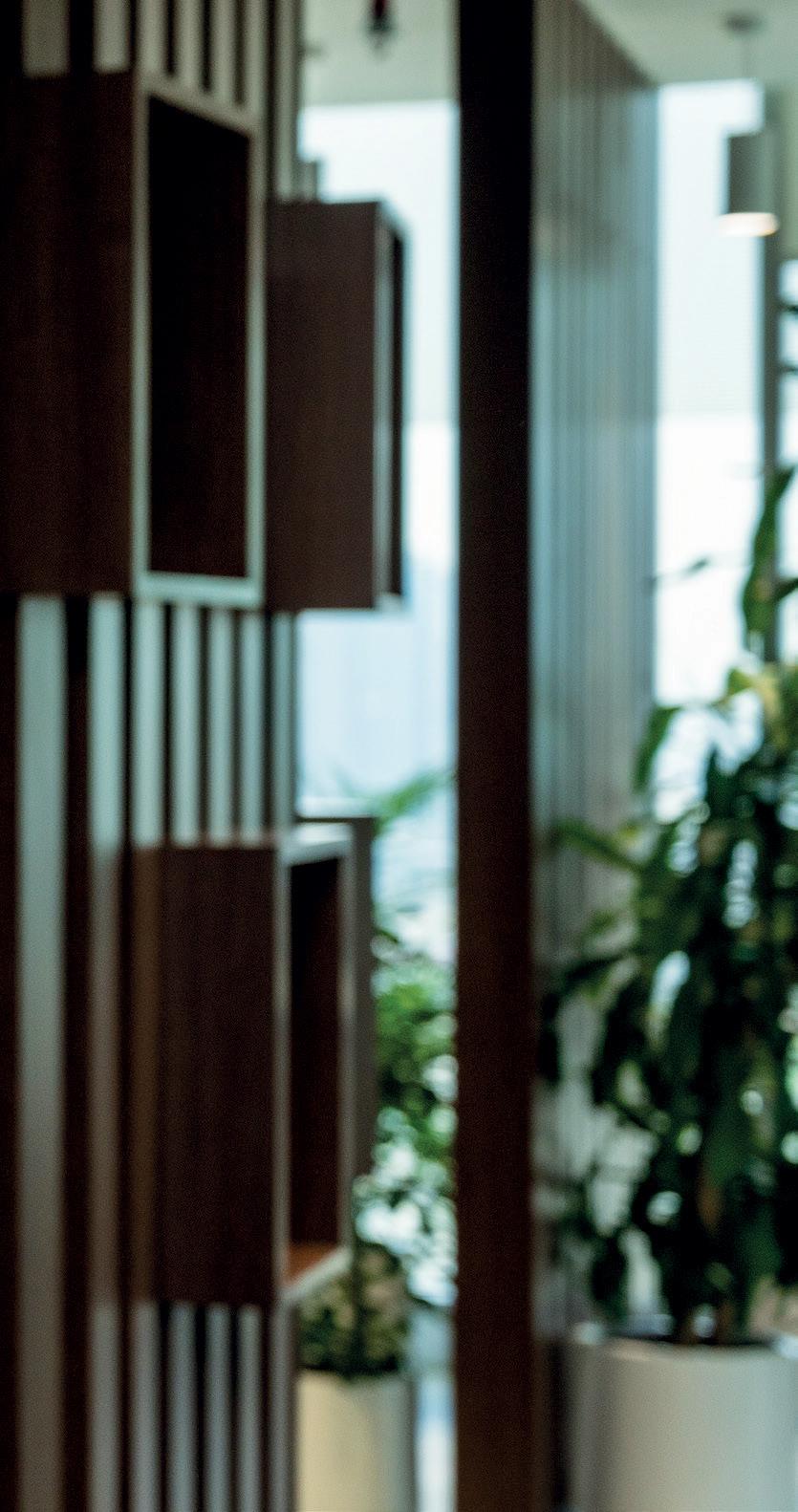

How do you see the next stages in the company’s evolution?
“Like many other businesses, our presence here dates from 15 to 20 years ago, when we had a small local office, supporting our partners and clients, and really encouraging them to do everything that we’ve spoken about so far. We grew the business organically, by creating a reputation based on trust and integrity, and - again it’s quite a typical story – that meant bringing people like me across to the UAE.
“Plus, one of our signature brands, Terrain, has been in this region for over 60 years, and has been established as a trusted and reliable brand.
“Our next step is to really develop our client and consultant-facing activities, expanding the type of conversations we’re having. We plan to look more and more at the way contractors are innovating, and then ask questions like: “If this is what you’re doing, how do you want it delivered, what are your expectations, what does the data tell you is the optimum way of working?” We’ll use this information to steadily expand our remit and both the style and scale of our offer - always keeping our commitment to best practice throughout.
“We’re also very niche. Our specialist services and knowledge are not suitable for all budgets and builds: we know what we’re good at. So, for example, while Saudi is no doubt a terrific and growing opportunity, we work with many of the local authorities on ‘greening’ initiatives, but you won’t see us tendering every project that sends us RFP. We’re committed to sustainable and organic growth with a focus on the quality and effectiveness of the solutions we provide, helping create value for our clients throughout the region.”
The 100th Issue meconstructionnews.com
On Site | 25
firmly believe”, says Laura Morgan, “that over the last five years, we’ve seen a number of changes in the role that data plays in the industry, and that we’re now seeing a more data-driven market. This is in turn fuelling greater competition within the sector at a number of levels, so there is a need to ensure that data is fully relevant and supports our deliverables alongside our client’s expectations.
“Needless to say, strong data integrity is essential and we see this as a key pillar of our services. While we do, of course, use intelligence data collection via subscriptions to the world’s leading online providers, first and foremost, we are utilising our own internal data - which is the primary source. This puts us in a valuable position and we’ve seen first-hand the positive results it entails for clients. It’s also the result of our belief in knowledge-sharing across the entire team and the benefits that it can bring.
“JLL has a brilliant research capability, allowing us to drive initiatives which we cover in our research and comprehensive market intelligence reports. We can work both with great speed and on a cyclical basis, with detailed updates that the market can anticipate and depend upon. For example, over the last 2-3 years you could almost search and collate intelligence on a daily basis, due to fluctuations and changes in the global economy. However, in order to remain relevant to how the sector largely behaves, we work on quarterly cycles - which seems to be an optimum timescale for data gathering, spotting key changes and trends.
“In doing all this, we are of course driven by our clients, and our focus is meeting their needs whilst bringing something a little
“IF YOU DON’T KNOW, ASK”
Global real estate titan JLL is well-known for its highly detailed and impactful market reports. How are they put together, what are the priorities and what does the data tell us about market differentiation?
Middle East Consultant goes head-to-head with Laura Morgan, Market Intelligence Lead MEA, Project and Development Services, JLL

The 100th Issue meconstructionnews.com 26 | Technology


The 100th Issue meconstructionnews.com Technology | 27
Laura Morgan, Market Intelligence Lead MEA, Project and Development Services, JLL.

‘different’ to the table. This allows us to have a number of round-table discussions, with the opportunity to present our research and create uniquely bespoke styles of dialogue for each client. Moreover, at JLL, we are continually reviewing our strategy for data analysis and how we can use that advantageously across our highlyconnected teams, which stretch across the MEA region. As you can imagine, it’s of utmost importance to ensure we are properly connected at all times, with access to our data providing a consistent approach to project delivery.
“Another factor here is that we don’t see ourselves operating in a way that’s detached from the realities our clients face. We welcome client feedback and we’re always interested to have discussions about what sets of data are proving most useful. Interestingly, I believe that our offer has grown with the rise in market volatilities: a climate of sudden changes within the market has driven immediate updates and requests from clients to understand the impact that these unexpected factors may or may not have on their projects. Which is ultimately why we do what we do.”
Given that the market is becoming increasingly data-driven and rapidly evolving, will JLL’s data-mining and analysis procedures be changing in the near future? “The power our research brings is building relationships within the industry, discussing current issues and the impact of geo/ local events. It’s about ‘bridging the gap’, which
could make for very positive changes within the industry. The construction sector faces tough challenges in volatile times and sharing lessons learned, understanding the risks across the sector, helps better prepare and process the changes energised from those periods. Our priorities lie in trying to keep ahead of the market, identifying emerging trends, establishing client and development needs and ultimately delivering excellence. The data collated through market intelligence research is fully transferable into our project deliverables: it means we are better prepared in unprecedented times, whilst supporting our clients on unique projects and objectives.”
THE LOCAL MARKET AND HOW IT’S DIFFERENTIATED
But what about the local market? Are there unique aspects to the market in the GCC that we don’t see elsewhere? “I think the spotlight”, comments Laura, “is very much on this region at the moment - catalysed by the development plans through the various nations’ vision programmes. I do believe that the GCC is in a unique position and has shown resilience within the construction sector since the pandemic. We have still been susceptible to global economic headwinds, but as a region - featuring some of the world’s most prestigious and exciting projects - it is appealing to international clientele, whether that be for employment, investment or tourism opportunities.
“So there’s no doubt that at a macro-economic level the region is performing well.
MENA construction growth is optimistic with a robust pipeline of projects.
I also see that there’s strong interest in our services uniformly across the UAE,
Egypt and Saudi Arabia. We reciprocate by ensuring that JLL globally utilise our expertise and knowledge with a well-established research and insights capability. This aims to reach global clients at all times and across multiple sectors.
“Of course, when it comes to this region, it’s not always good news: I believe, for example, that from a technological and sustainability aspect, we still have some way to go in comparison to other regions which have better-established legislative strategies. Nonetheless, JLL’s Project & Development Services has a fantastic Energy and Engineering team who are doing some very interesting work with clients in the region, so hopefully this may soon change.
“A particular theme here in the region is the rise of the Saudi ‘giga-projects’, which I’m often asked about. I think the types of projects prevailing in Saudi at the moment are unlike anything we have seen before.
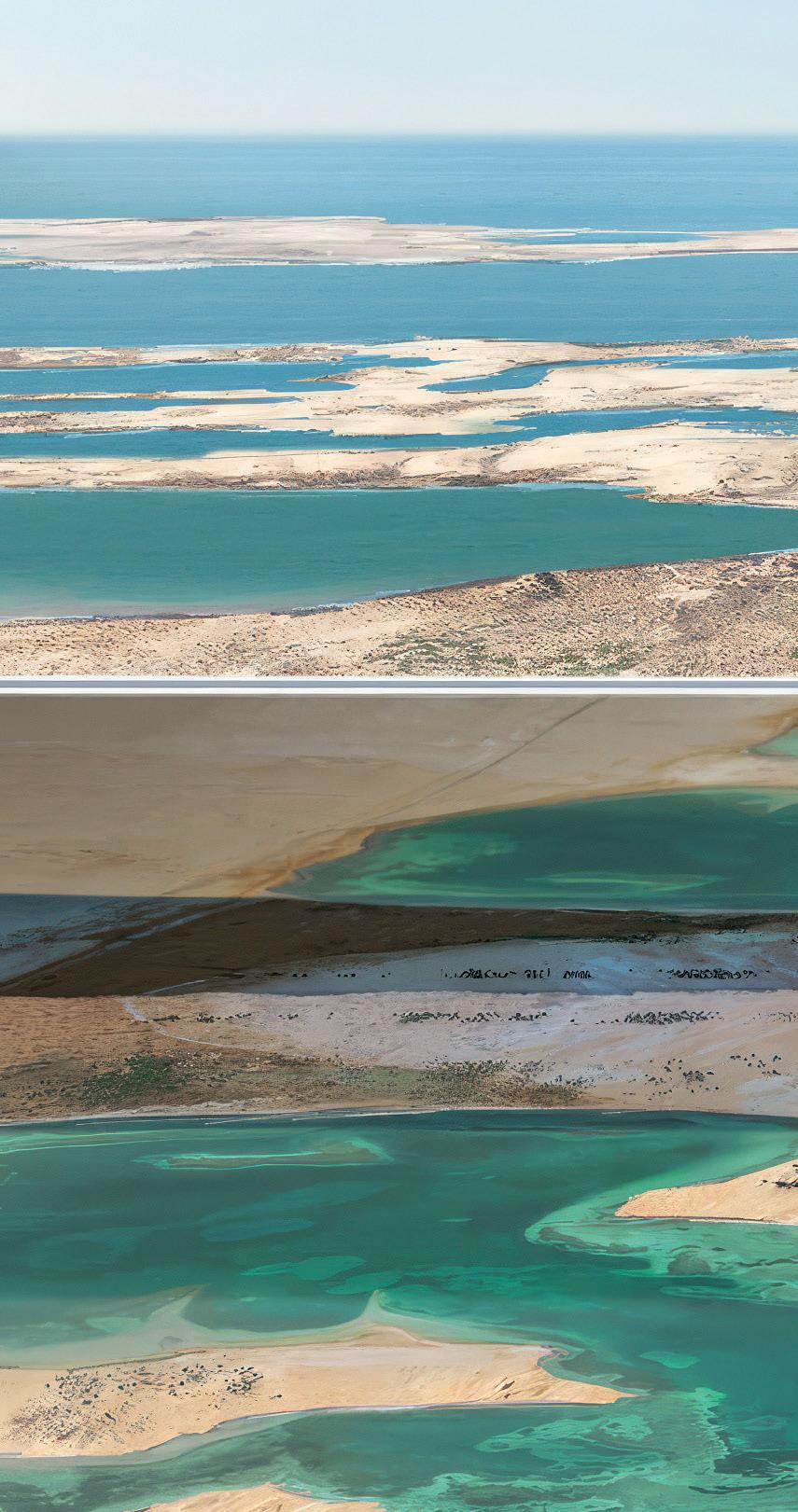
The 100th Issue meconstructionnews.com 28 | Technology
It’s a really exciting time to be working in the GCC - especially on the giga-projects. I believe this region has always had a uniqueness and a differentiator from its neighbours, and the Saudi projects are accelerating that trend. It will be very interesting to see whether the significant and very sophisticated development demands of the giga-projects drive increasingly important agendas like the quest for better sustainability - which of course is extremely topical here, with the UAE hosting COP28 later in 2023.”


THE MAKING OF A MARKET INTELLIGENCE CHAMPION
What are the factors that empowered Laura to specialise in data analysis for a Fortune 500 business? “During my MEP quantity surveying trainee years in London and during my degree”, explains Laura, “the Construction Economics part of my job became a key strength which
perhaps directed me to where I am today. I really enjoyed learning that part of my job, and the process of starting to notice the correlation of economics within construction. I also noticed early on that I’m a question-asker: if you don’t know, ask. There were many aspects going on in the background as an MEP QS that I didn’t completely comprehend but I wanted to know. So, through one form of research or another, I found out.
“Ultimately, I come from an MEP and cost management background: during my career I was passed the baton of writing an extensive annual construction handbook which I really enjoyed, in particular, the self-learning journey, problem-solving and analysing data in a different context. This knowledge is valuable and transferable across day-to-day deliverables. It’s also never been more important than it is right now, in an increasingly data-driven world.”
The 100th Issue meconstructionnews.com
I think the types of projects prevailing in Saudi at the moment are unlike anything we have seen before. It’s a really exciting time to be working in the GCC”
Data is a crucial factor in any company's ability to understand market trends and proactively design its stance and commercial habits in the market, and JLL has pre-eminent in its sourcing and deployment or market intelligence.


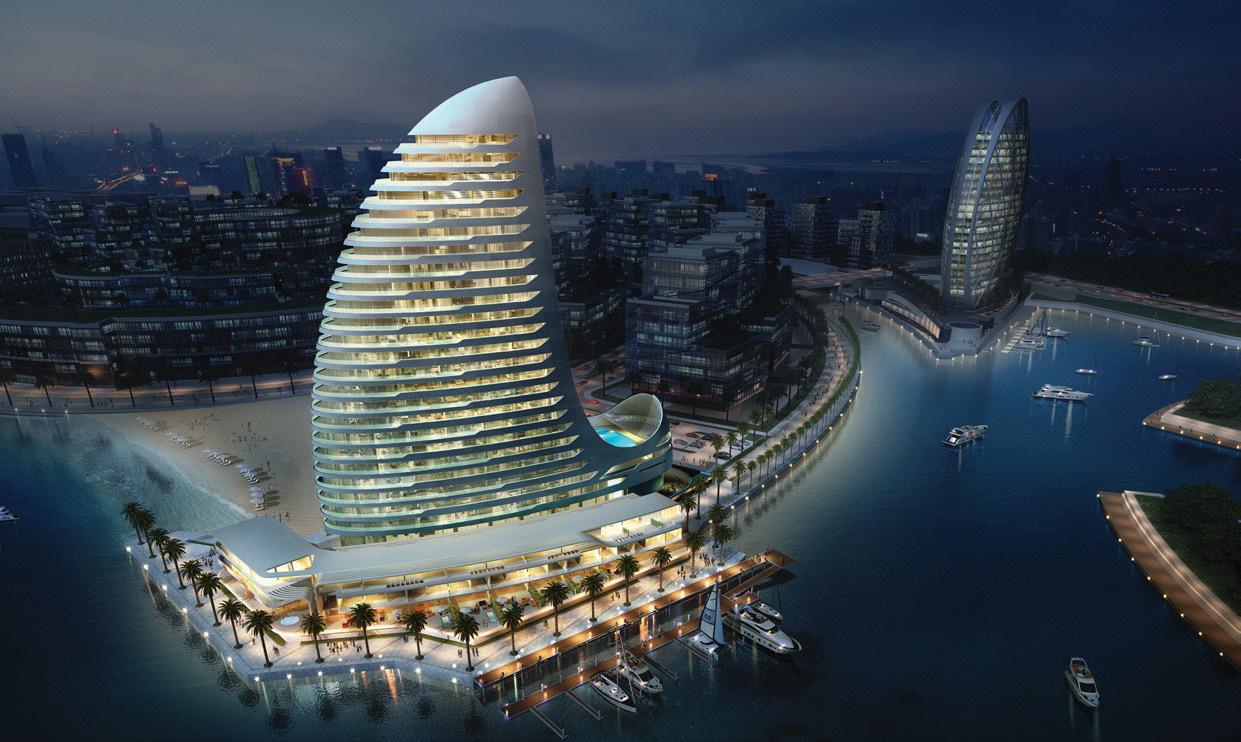

Residential Offices Commercial Mixed Use Hotels Public Educational Master Planning Sports & Leisure Religious Medical MZ Architects believes in pushing the boundaries of architecture and design to inspire and transform LEBANON KASLIK T +961 9 636 405 F +961 9 636 404 E info@mz-architects.com UAE ABU DHABI T +971 2 6350 002-1 F +971 2 6350 008-9 E infouae@mz-architects.com Our work relates to spatial concepts, form and structure 7th st. - Electra - Abu Dhabi, United Arab Emirates KBC Center - 5th Floor - Kaslik, Lebanon P.O. Box 159 Zouk Mikhael
International Women's Day (8th March) is a global day celebrating women and their achievements in every aspect of life. Inevitably, in terms of business media, the day willquite rightly - inspire a plethora of articles that talk about women in leadership, career and Board empowerment, and the availability (or not) of resources for holistic development. Not wishing to ‘buck the trend’, here and in the following article, we’ll cover two aspects of women’s leadership, beginning with neurology and comparative female/male DNA; then, we’ll look at effective stress management.
After all, stress is inevitable; it’s a ‘given’ on the path to progress - and being able to handle it is a step nearer to the Holy Grail of business success.
Personal development coach and corporate trainer Neetu Choudhary shares her insights…

The 100th Issue meconstructionnews.com Empowerment | 31
T H E
D N A O F
L E A D E R S H I P
meconstructionnews.com The 100th Issue 32 | Empowerment
irst things first: more than 99% of male and female genetic coding is exactly the same. Out of 30,000 genes in the human genome, there is less than 1% variation between males and females; yet that ‘less than 1%’ is responsible for a universe of profound difference. Less than 1% impacts the way we see life and the events of life. The reality is, understanding the female brain could aid in the development of well-curated leadership programmes aimed at developing more female leaders and assisting women in all aspects of life. If we’re talking pure size, male brains are larger by 9%; however, males have different body sizes, and these numbers are after correcting for body size. Yet here’s the surprise: women have as many brain cells as men. How is this possible? Well, cells in the female brain are packed more densely - and, as it’s not too hard to imagine, this leads to a number of quite different behavioural patterns and attitudes. Such as the following:
meconstructionnews.com The 100th Issue Empowerment | 33
There are sound scientific grounds for arguing that men and women are ‘wired’ differently; so it’s time for businesses to ditch the urban myths and leverage the contrasts in their management models and expectations
NUMBER ONE: WOMEN ARE BETTER AT READING EMOTIONS
Women do not like ‘flat’ faces; they want to read emotions from facial expressions, and a flat face creates anxiety and stress. Girls are born with a propensity for stronger emotional expression, which helps them understand and connect with others better.
A study at the University of Texas that focused on 12-month-old boys and girls, shows some interesting findings. While playing, girls looked back at their mothers' faces ten to twenty times more than boys. The female brain evolved for higher connectivity, and emotional connection is at the heart of building a connection. In fact, girls make more eye contact than boys, even as babies. Women have an extraordinary capacity to read tone, pitch, emotions, and state of mind, and also the ability to defuse conflict. Women need to remember emotional details to build a better, more meaningful connection, which explains why the hippocampus is larger in the female brain than the male brain. The hippocampal region serves as the central processing unit for memory formation, emotions, emotional details, and all associated feelings for each emotion. The hippocampus is not only larger in women but more active as well. The business out-take here is that women are great at communication, connection, and conflict resolution and organisations can use these special skills strategically and encourage them to grow these skills.
NUMBER TWO: THE FEMALE BRAIN HAS CYCLICAL STRENGTHS
Unlike the male brain, the female brain goes through a lot of changes, even on a weekly basis. Each month, the menstrual cycle refreshes and recharges certain parts of the female brain. Estrogen fertilises cells that make a woman more social and relaxed during the first two weeks. In fact, a 25% growth of connections in the hippocampus is observed in women during this time; it is the ‘estrogen phase’. The non-forgetting hippocampus makes the brain sharper, more alert, and better during the estrogen cycle. Women are quicker, and they remember better, perform better, and feel better. During ovulation, from around the 14th day onward, progesterone starts playing the role of estrogen and reversing its action. This makes women feel more irritable, less focused, slower, not as happy, and more stressed. The last two weeks are mentally difficult for women. The hippocampal region is the most estrogen-sensitive part of the brain, and this may explain why women have better verbal performance, better connections, and more emotional control during the estrogen cycle.
NUMBER THREE: BETTER INTUITIVE SKILLS AND ‘GUT FEELINGS’
‘Sixth sense’ - or gut feeling. In countless tests and surveys, women seem to be better than men here as well. Women can sense their colleagues' distress, their boss' frustration, their clients' expectations, their friends' joy over their accomplishments, their spouse's concerns about their careers and their children's peer pressure. The female brain contains cells that track body sensations, which aid in gut feelings. The estrogen increase means women feel gut sensations and physical pain more than men. A greater sensitivity to body sensations supports the brain's ability to feel emotions, pain, and painful emotions. The relationship between gut feelings and intuitive hunches has a biological basis. Women are naturally good at face reading; indeed, this extra sensitivity toward reading emotions can be overwhelming. A woman’s mirror neurons sometimes feel the pain of others, and when this happens, it feel it as though it is happening personally. Yet, these characteristics can distinguish women as great leaders; they enable them to read the minds and emotions of their teams, clients, and other stakeholders much better, faster, and more accurately than men, resulting in synergy and progress. Organisations should consider this natural ability to build relationships, resolve conflicts, and find a middle ground for a win-win solution.
The 100th Issue meconstructionnews.com
34 | Empowerment
The female style of leadership can deliver substantial advantages, and organisations must understand what it brings to the table in order to maximise their sustainable future and growth”
Neetu is a specialist consultant on key work-related issues, such as leadership coaching, stress management and organisational competitve advantage.
NUMBER FOUR: WOMEN LOOK TO RESOLVE AND INCLUDE, NOT CONQUER
While men and women report feeling the same amount of anger and related feelings, when it comes to the expression and aggression of anger, it is much higher in men than in women. The amygdala (there are two amygdalas right behind the eyes; it is called in the singular, not the plural) is a protective centre that is always on the lookout for danger. It is the seat of fear, anger, and aggression, and it is physically larger in the male brain than in the female brain.
Not only that, but men are more sensitive than women. In fact, the fear control centre, or PFC (prefrontal cortex), is much bigger in women than in menso now you know why women are good at avoiding fights and resolving conflicts. It is easier to push a male anger button than a woman's; she relies more on her PFC.
The female brain has a strong dislike for conflict, fights, and arguments. While women do not show anger easily, they do get anxious faster, which allows their brains to think of ways to protect themselves and their loved ones. Sudden changes in the organisation may have a huge emotional impact, cause anxiety and depression in women, and threaten the survival of her offspring, family, and loved ones. She always wants enough food, funds, and safety for them at any cost, and any threat to them worries her inordinately. There is a saying that a distressed mother is the most dangerous person, as she will do anything and everything to protect her children. Organisations can have formal change management policies to introduce, implement, and institutionalise change.
NUMBER FIVE: FEMALE BRAIN BEHAVIOUR FAVOURS SUSTAINABILITY
Women have the same brain size as men, but they use different parts of the brain at various times to perform the same function. They are evolved for reading emotions, understanding non-verbal cues, building connections, maintaining relationships, resolving conflicts, maintaining peace in the tribe, and nurturing. She feels the same amount of anger as a man but does not express it, as she values relationships over authority. She makes sure everyone in her tribe has what they need and is safe. She is the one who unites and keeps teams together; she is the one who can lead most naturally and inclusively, with the greatest number of benefactors. Particularly in an era of Sustainability, the female style of leadership can deliver substantial advantages, and organisations must understand what it brings to the table in order to maximise their sustainable future and growth.

The 100th Issue meconstructionnews.com
Empowerment | 35

The 100th Issue meconstructionnews.com 36 | Empowerment
How we react to stress can transform our success levels; and it’s high time we recognised that men and women get stressed for very different reasons
USING
STRESS MANAGEMENT NEUROSCIENCE
The 100th Issue meconstructionnews.com Empowerment | 37
ack of work-life balance, loss of a loved one, uncertainties, illness - stress can be triggered by many factors in our lives. But before we look at stress in more detail, let’s clarify the difference between stress and anxiety. Stress is the body's reaction to a perceived threat, whereas anxiety is the body's reaction to stress. Stress is a shortterm response to a situation, whereas anxiety can linger and may not have an identifiable trigger. Both have many common symptoms, such as faster heartbeat, rapid shallow breathing, upset stomach, anxious thoughts, nausea, unhappiness, nervousness, etc. Stress is so widespread that it is even experienced and mentioned by children at kindergarten; yet it is still widely misunderstood and beset by generalisations and half-truths.
While the stress centre in women's brains is smaller and less active than in men's, the intensity with which women experience stress is high. When a woman is stressed, she is really stressed. A woman may see unpaid bills as a threat to her family and a cause for getting highly stressed, while a man may see them as an unfortunate problem that will be tackled in good time. A school bus arriving late, or a teenage daughter's phone being unreachable, again triggers higher stress related to protecting the family and its dependents at all costs. Conversely, she might see something like being late for an event or meeting as a purely practical issue, not the job-threatening scenario that a man might conjure up and panic over.
Some of this data is millions of years old and encoded in our DNA. The way we experience and respond to stress is handled by the amygdala - an almondshaped region of the brain located directly behind our eyes. The amygdala (there are two amygdala; it is called in the singular, not the plural) is a protective centre that is always on the lookout for danger. It is the seat of fear, anger, and aggression. It is by itself unable to differentiate between a real threat and a perceived threat and triggers the responses of fight, flight, or freeze. This creates stress in the mind and body as the body is now ready to take action by either fighting the danger, freezing physically (now it is more mental than physical), or taking flight and running away from the situation. Your brain is doing its best to keep you alive by using tools from primitive times, but situations have changed, and the same tools that worked earlier may not work anymore. Your boss is not as dangerous as a sabre-tooth tiger, but this is how the brain sees it.
Having said all that, stress is not bad in all cases. In fact, if we didn't get a cortisol rush in the morning, we wouldn't even get out of bed, let alone do any work. It regulates our circadian rhythm and motivates us to do things we would not do otherwise. To some extent, stress is required to improve performance, just

The 100th Issue meconstructionnews.com 38 | Empowerment
The sources of stress can be many, but the causes are only two - either a lack of capacity or excess demand.
Understanding this is the best clue for dealing effectively with stress”
as it is for athletes, top performers, and businesses with challenging goals; set goals that are a little tougher each time to push limits. This healthy type of stress is known as "eustress," also known as "eustress syndrome," and it aids in performance. Stress progresses from excitement to distress, and if it persists, it becomes chronic stress. Acute stress is when someone sees or feels something that is a sudden danger - like a car heading towards them - which is known as peak Eustress. This is largely fine, contained in a moment, and most useful. The most dangerous type of stress, however, is Chronic stress: and most people with a bad work-life balance face it. Chronic stress is the root cause of chronic diseases. We’ve already mentioned factors like fatigue, muscle tension, headache, upset stomach, dizziness, and irritability (all listed by the American
Institute of Stress Management). Other symptoms are pessimism, irrational nervous energy, lack of energy, and lack of happiness. But it's not just personal behaviours: people who have chronic stress can have chronically poor relationshipsbad families, broken families, and immense problems with children and what they might expect from them. What’s more, in the western hemisphere, chronic stress is responsible for 60–90% of all doctor visits.
The sources of stress can be many, but the causes are only two - either a lack of capacity or excess demand. Understanding this is the best clue for dealing effectively with stress.

So - the best way to deal with stress is to either increase your capacity to deal with such situations or reduce your demand for them. Demand can be reduced by delegating or outsourcing,

establishing a support system to assist in times of high demand, or eliminating non-urgent tasks. Meanwhile, increasing capacity is a gradual process that results in long-term benefits when dealing with unexpectedly stressful situations. Key factors in increasing capacity can be a healthy diet, exercise, a good night’s sleep, or meditation, which all have benefits for mental and physical health (after all, mind and body are inseparable).
No matter what we do, unexpected things will happen, any one of which could cause stress. Stress is inevitable; the solution is in understanding how to manage it and work on long-term capacity improvement and how to reduce demand. Stress is good when your capacity is greater than the demand, and bad when the demand is greater than the capacity and you do not have any tools in your toolkit to manage it. Long-term stress leads to chronic diseases, impacts society, and breaks families. For all organisations, knowing the stress triggers for its employees should be a ‘sine qua non’and yet, how many actually have in-house, proactive guidance readily available to those affected? The next step here is for businesses to appreciate the particular triggers that are most likely to impact female staff and to engineer dedicated stress management programmesbecause, after all, we know the rewards they’ll derive from of well-functioning, untroubled female leadership can be immense.
The 100th Issue meconstructionnews.com Empowerment | 39
Dealing successfully with stress is one of the primary differentiators of strong leadership and effective task management.

meconstructionnews.com The 100th Issue 40 | On Site
While factors such as advances in LED technology are making Sustainability a partially-achievable goal, still larger issues lie in wait for the lighting industry and its social implications.
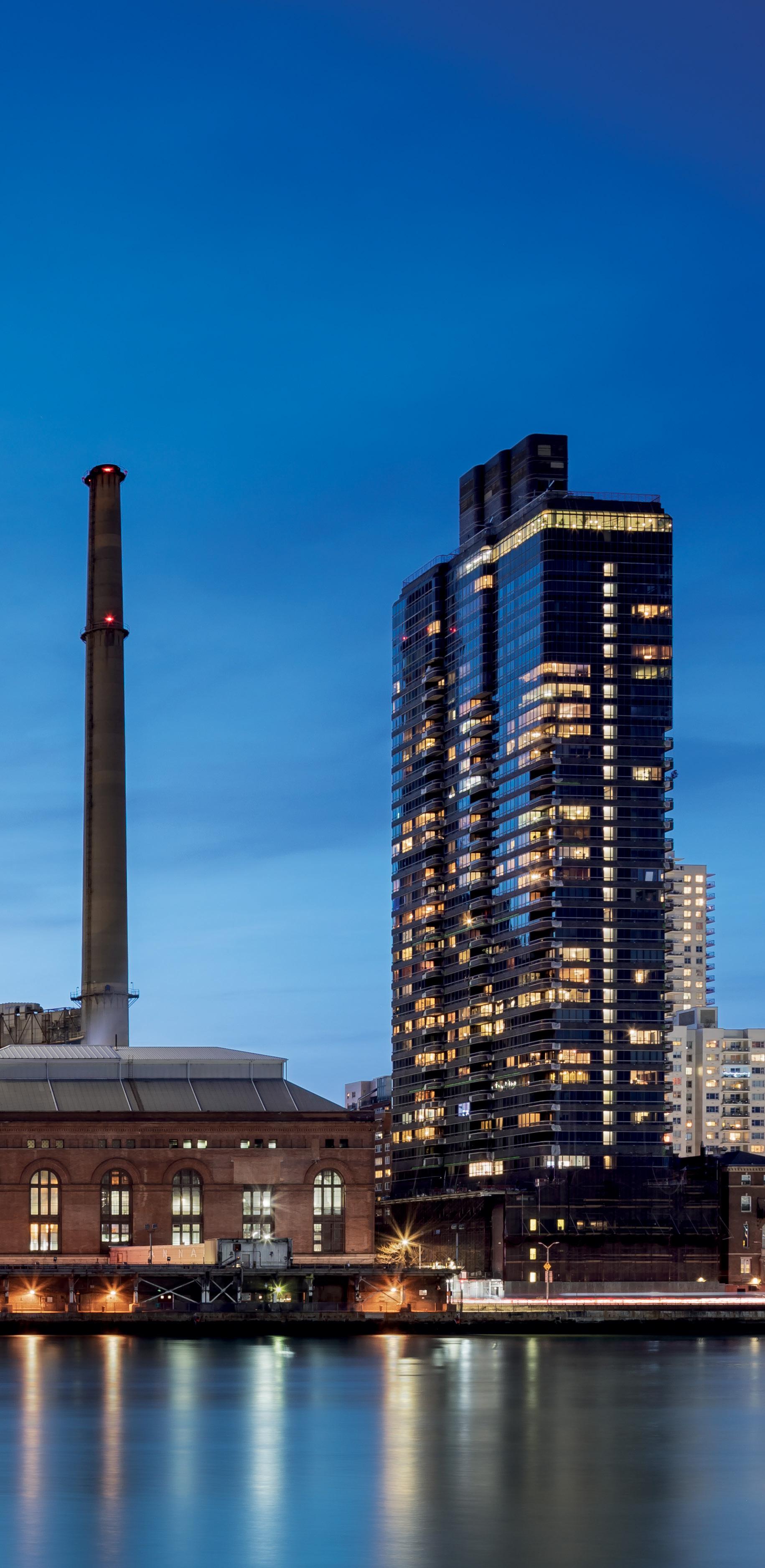
Maria Dautant, Senior Associate, HLB Lighting, investigates…

The 100th Issue meconstructionnews.com On Site | 41
The David H. Koch Center for Cancer Care at Memorial Sloan Kettering Cancer Center
Lighting
Basic
Photo: © Andrew Rugge. Courtesy Perkins Eastman.
as a
Human Right
he energy crisis in the 1970s may have been one of the main reasons for the lighting industry to develop more efficient products. At that time, the need to reduce energy consumption due to the increase in the cost of electricity, pushed companies such as General Electric, Philips and Sylvania to develop highly efficient fluorescent lamps, mostly for commercial applications.
By the time the concept of “sustainability” started appearing in reports issued by the United Nations 30 years ago, we had already made some progress in manufacturing products that were energy efficient. However, it wasn’t until the industry developed the white LED that we were able to make remarkable advances in this arena.
With the development of LED luminaires, we have managed to make important reductions in the energy consumption of city-wide lighting systems, as well as commercial and residential buildings. On average, LEDs use 90% less energy than incandescent lamps and are up to 80% more efficient than fluorescent lamps. LEDs also last 25 times longer than traditional sources, reducing waste. In addition to this, LED luminaires and lamps contain no hazardous materials, such as mercury, which fluorescent and other discharge lamps require to function.
In the last couple of decades, LED technology has advanced in such a way we can confidently say LEDs have taken over the world. Computer and TV screens, car headlights and building facades are only some of the elements where LEDs are used. Nowadays in architecture, LEDs are the main light source being specified by engineers and lighting designers.
LEDs alone have been a great success in increasing the efficiency of lighting systems. However, the other side of the energy savings coin is how we use and control our lighting.
Just as the lighting industry has made
great advances in luminaire design, the controls industry has also changed greatly over time. What used to be a simple ON/ OFF switch has now become an electronic device that communicates with a central system to control the lighting in a given space. Those times when we had a switch for every lighting zone are long gone. Users now have the option to choose from multiple scenes and dimming levels to best fit their needs using one single device. Owners benefit from the use of sensors and time schedules to save energy by automatically turning OFF lighting in un-used spaces or after hours.
On a broader scale, cities such as San Diego and Copenhagen have benefited from the use of Smart Lighting Controls
Monterey Convention Center
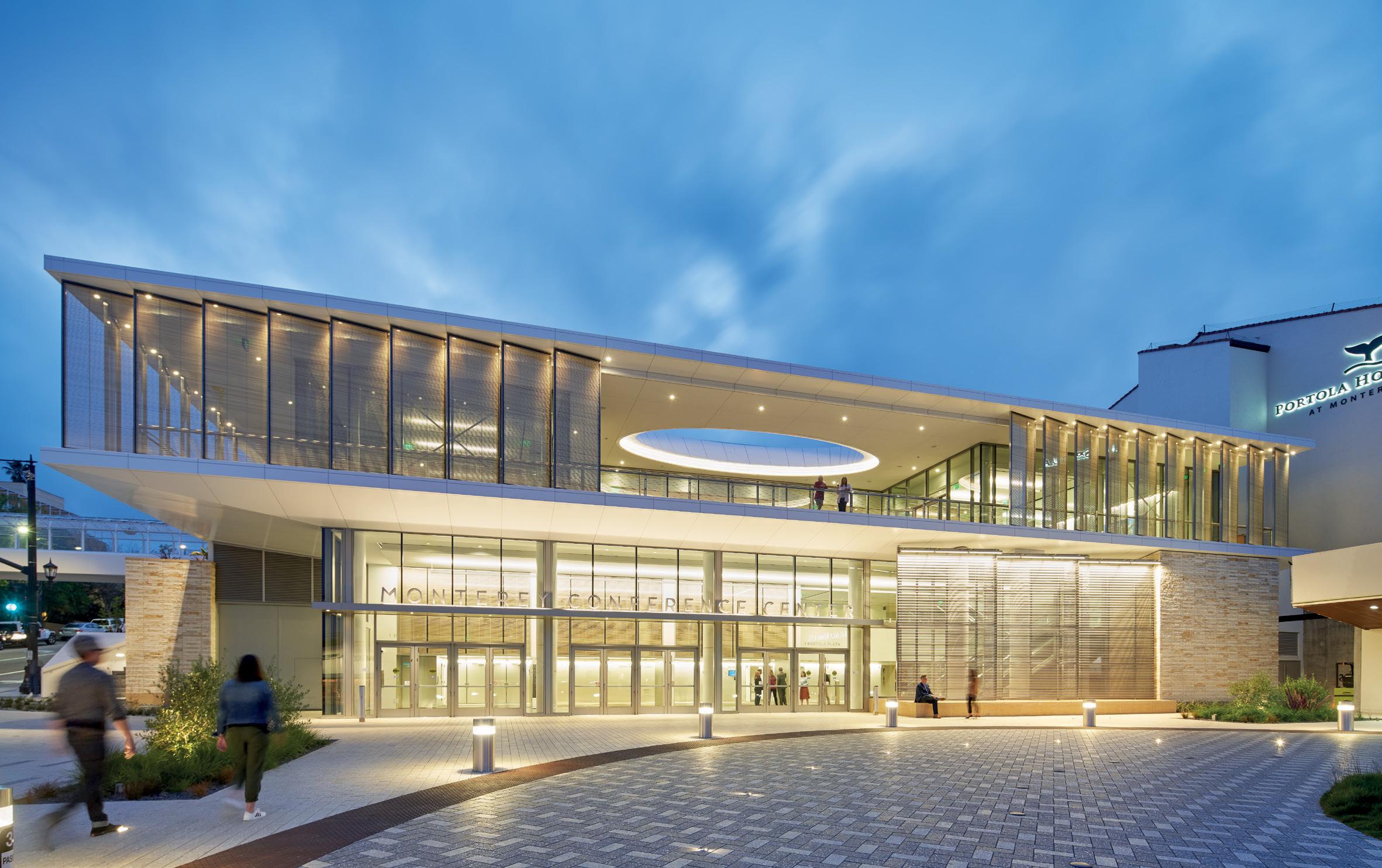
The 100th Issue meconstructionnews.com
42
Architect: SOM
LEED Platinum
Photo: Bruce Damonte Photography
Mass General Brigham Administrative Campus
Architect: Gensler
LEED Gold
Photo: Andy Caulfield
Systems. Following the same basic energy savings principle as commercial buildings, a city-wide LED lighting and smart control system can save energy by dimming poles and other public lighting after hours or using sensors to determine when and where lighting is required. This approach doesn’t just save energy, but also reduces light pollution.
We can all agree that without LEDs and smart controls it would be impossible to meet energy codes around the world and sustainability goals mandated by governments, or required in certifications such as LEED and BREAM.
Unfortunately, efficiency alone is not enough to achieve sustainable development.
HOW THE LIGHTING INDUSTRY IS CHANGING
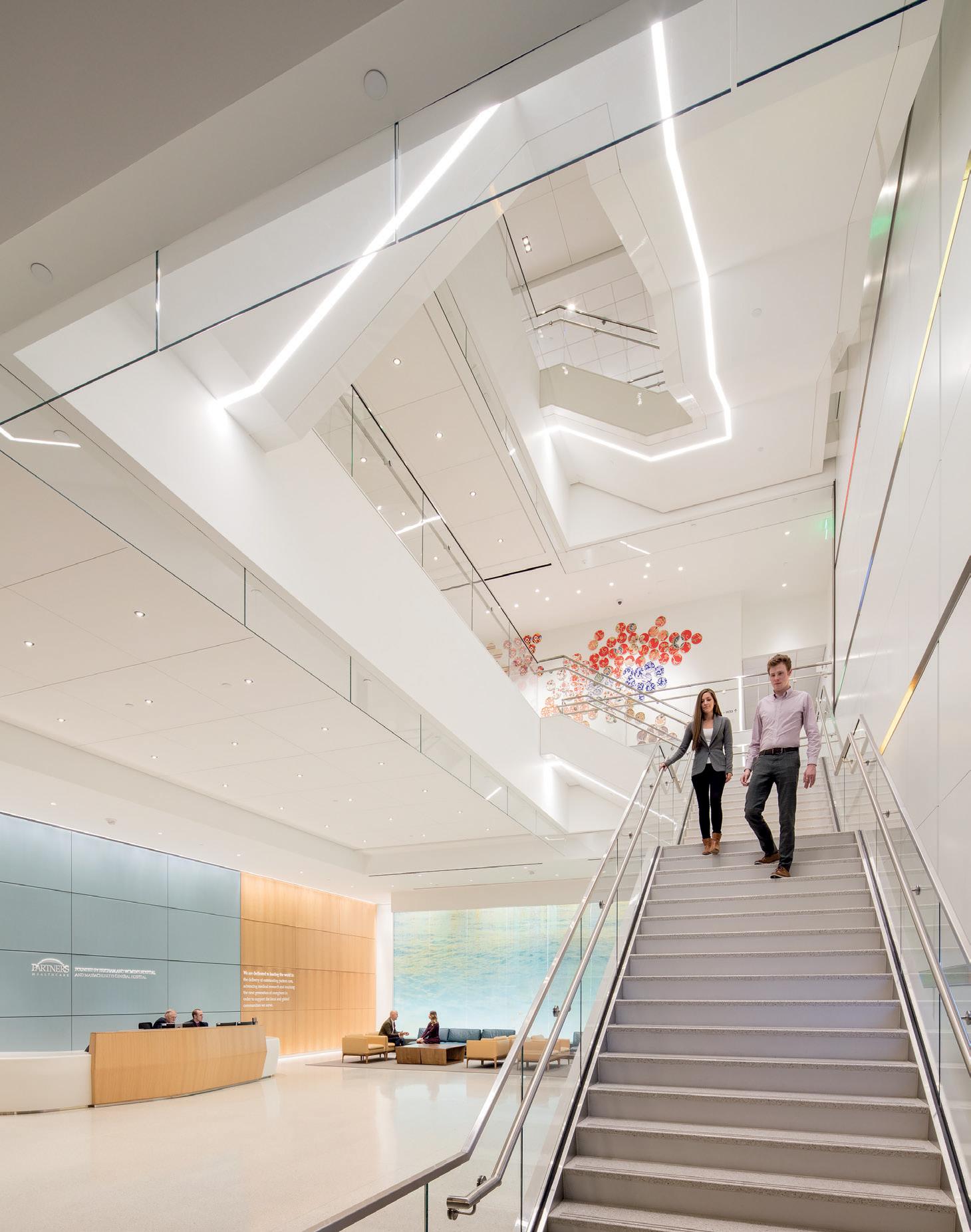
Most recently, the conversation has shifted. Now we hear a good deal about Carbon Footprint and Circular Economy whenever we discuss sustainability.
Interestingly, the term “Carbon Footprint” became popular thanks to the oil company British Petroleum. Their 2004 ad asking individuals to calculate their “Carbon Footprint” brought attention to the impact human activity has on the environment. Almost ten years later, much like the word “Sustainability”, “Carbon Footprint” is everywhere.
With the rise of the global average temperature and the very dim future we face if the trend continues, governments and industries around the world are turning their focus to lowering humanity’s carbon footprint. Given that buildings are responsible for 39% of the global carbon emissions, decarbonising the sector is critical in achieving global sustainability goals.
The efforts the lighting industry has made in increasing the efficiency of LED luminaires and reducing energy consumption have certainly helped in reducing the operational carbon of lighting systems. However, the embodied carbon of lighting products, specifically of LED luminaires is still very high. According to research done by Aalto University in
Finland, the use of heavy metals and silicone in the manufacture of LEDs releases more than double the amount of CO2 than the materials required in the manufacturing of legacy lamps and luminaires. And to add to that, products are not always made, of course, where the projects are being built. This is certainly the case in the Middle East, where most lighting products are imported, increasing the embodied carbon of luminaires. Currently, the shipping industry as a whole has been estimated to account for 3% of worldwide greenhouse gases, and it could rise to 10-13% within a few decades.
The good news is the lighting industry
meconstructionnews.com The 100th Issue
On average, LEDs use 90% less energy than incandescent lamps and are up to 80% more efficient than fluorescent lamps”
On Site | 43
is rapidly looking for alternatives to decarbonise the sector. Although many manufacturers around the world are mostly focused on profits and don’t have accurate data of the emissions generated by their production, major players in the industry have done extensive research in this field and are now looking for ways to become more environmentally sustainable.
An interesting idea that has been proposed is the use of 3D printing in construction sites. Instead of shipping fully finished products to the jobsites, the manufacturers would send an electronic file to 3D print luminaires on site. Only drivers and LED boards would be sent to the project, making shipments smaller and therefore, lowering CO2 emissions. It is an appealing idea also for maintenance. If a luminaire requires a specific part during its life, it could be printed in the facility, instead of being ordered and shipped.
The ‘Circular Economy’ is another concept lighting manufacturers are beginning to take into consideration.
LEDs may last a long time, but when their life comes to an end, luminaires are rarely recycled. Most of them end up in landfill, forcing the industry to use non-recycled raw materials to manufacture new products. The process of sourcing and producing new raw materials doesn’t just increase the carbon footprint of the industry, but it is also depleting our natural resources and, in some cases, increasing pollution.
The principles of the Circular Economy are:
• Eliminating waste and pollution
• Circulating products and materials
• Regeneration of nature
To achieve these principles, manufacturing processes and the source of raw materials are being reconsidered. The aim is to develop products that can be reused multiple times and/or sent back to the factory for recycle, once their end-oflife is reached. Since the inception of LEDs, manufacturers are constantly considering ways to facilitate maintenance, making it easier for replacing LEDs without the need to replace the complete luminaire. The new
products would also allow for the reuse of multiple parts, minimising waste and the need to source new raw materials.
Packaging is another source of massive amounts of waste in jobsites. Many manufacturers are reconsidering and redesigning packages to be more environmentally friendly, either by using recycled materials or developing packaging that is biodegradable to minimise the impact on the environment.
PAYING FOR THE LIGHT ITSELF - NOT THE MECHANISM
Other thought-provoking ideas are being discussed and put into action, beyond simply making new luminaires from recycled materials.
The thought that users would pay only for the light and not the lighting equipment is one of those proposals to move the lighting industry into a real circular economy. At a commercial level, instead of buying
luminaires, the user would buy a service that provides installation, maintenance, dismantling and return of the lighting system back to the manufacturer once it is no longer needed. In this case, the luminaires would be manufactured to be reused and/or recycled multiple times.
Although the industry is actively working to come up with ways to decarbonise the sector, most of the efforts are focused on commercial buildings. Ideally, products aimed for the residential market would also follow a similar redesign process in the near future. The promotion of these products must be paired with education campaigns to tell people how to dispose of their lighting, once it is no longer useful.
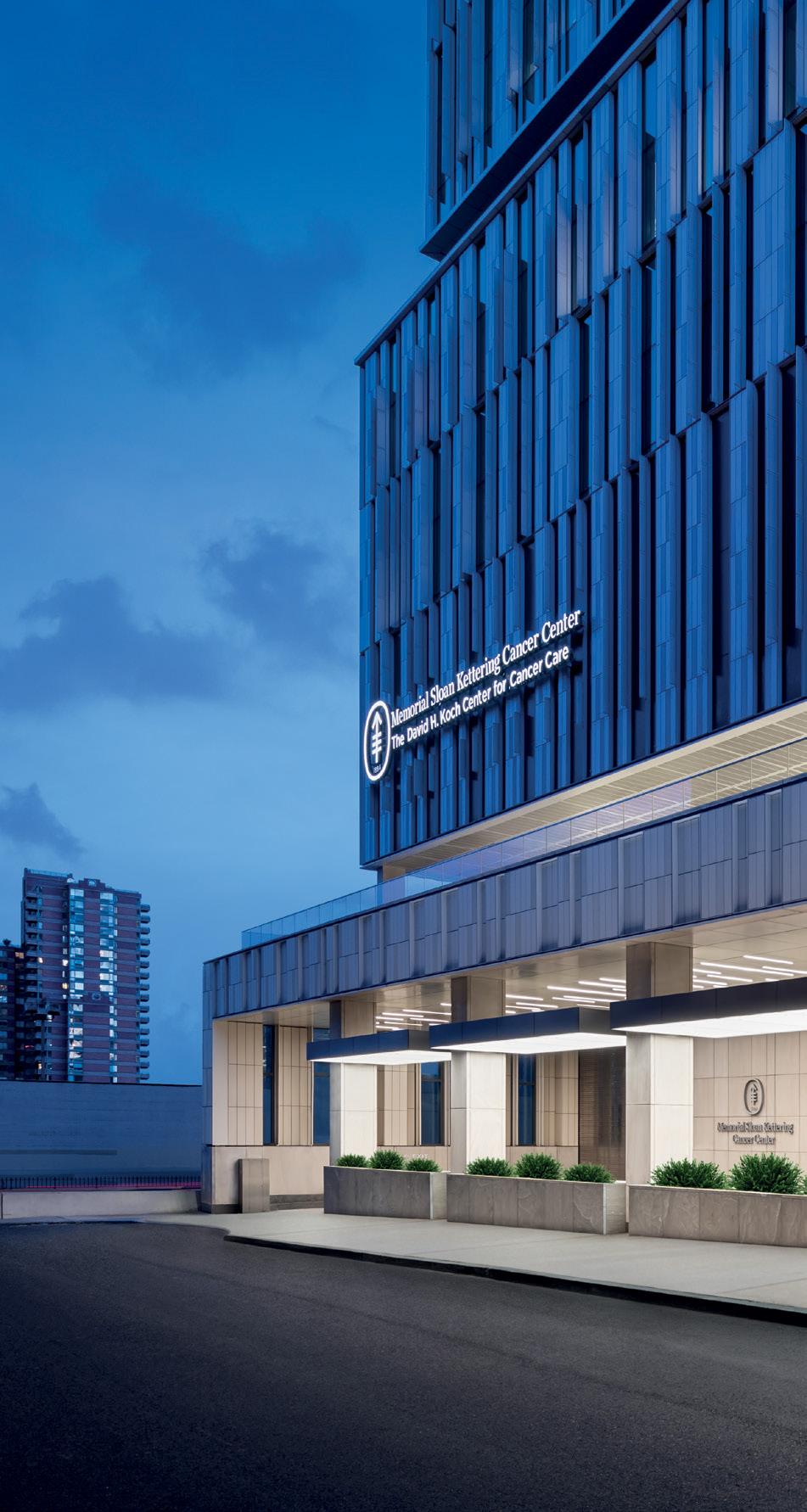
BEYOND ENVIRONMENTAL SUSTAINABILITY
The sustainability concept has three main pillars: Environmental, Social and Economic Sustainability. Due to the climate crisis, it
The 100th Issue meconstructionnews.com
44 | On Site
A city-wide LED lighting and smart control system can save energy by dimming poles and other public lighting after hours or using sensors to determine when and where lighting is required”
is understandable that, as an industry, we are focused on achieving Environmental Sustainability. However, it may come as a surprise that lighting will play a vital role in achieving Social and Economic Sustainability in the long term.

The United Nations, in its Universal Declaration of Human Rights, lists a standard of living as a basic human right. It could be debated that electric lighting is necessary in achieving a standard of living and therefore could be considered a human right.
Unfortunately, electric lighting, as its name clearly states, is linked to the access to electricity. The latest data show that over 700 million people around the world do not have access to electricity and the COVID-19 pandemic, the energy crisis and inflation have affected the progress made in previous years to bring electricity to every person on the planet.
Public lighting has a major impact on society. It can improve the quality of

people’s lives by creating a sense of safety and security and bringing life to open spaces, which has a positive impact on the economic development of urban areas. The lack of electricity, however, should not be an obstacle in the provision of lighting in remote locations. In fact, many groups and not-for-profit organisations around the world are working on bringing solar powered lighting to these places, as well as illuminating neighbourhoods in cities affected by degrading power grids, natural disasters or human conflicts.
On the other hand, the modern man and woman spend 90% of their time indoors. This means the design of interior spaces is critical in the development of a healthy society.
The reduced exposure to light can have a very negative impact on people’s health. People with little access to daylight may develop depression, impairment of cognitive function and irregular sleep-wake cycles. In fact, sleep deficiency has been linked with many chronic health problems, including heart disease, high blood pressure and diabetes, just to name a few.
Access to appropriate light levels in interior spaces is critical in avoiding these issues. The ideal light source would be the sun. However, when daylight is not available, the use of circadian lighting systems may help in creating an interior environment that can support the wellbeing of individuals.
But let’s keep in mind that the world’s population is varied, and one size will not fit all. People over 50, for example, will require higher levels of light than people under 35. Some users may have light sensitivity, and others will require special considerations due to visual impairment. Our approach to designing and lighting interior and exterior spaces must consider this and provide a certain level of flexibility, so the users can make their small areas their own.
The advances we have achieved in the environmental sustainability arena are very positive and we must continue to push for progress to fully decarbonise our industry. In the race to switch the world’s economy to a green one and achieve net zero emissions by 2050, we all have a role to play. However, we must also remember that sustainable development will never be achieved without economic and social sustainability. As a key part of the construction industry, lighting designers and manufacturers must do more in promoting the use of lighting as a tool for social and economic development, and encourage governments to create guidelines for spaces to be designed with wellbeing in mind and officially declare lighting as a basic human right.
The 100th Issue meconstructionnews.com
On Site | 45
The David H. Koch Center for Cancer Care at Memorial Sloan Kettering Cancer Center Design Team: Perkins Eastman Architects in association with Ennead Architects, ICRAVE LEED Gold
Photo: © Andrew Rugge. Courtesy Perkins Eastman.
ohamed, how do you see the equipment you install as aligning with some of the latest trends in kitchen and residential planning?
“Well, of course I would say that you’ll find our appliances in the most fashionable homes in the country, but in reality, it’s not only about being ‘trendy’; accessories of this kind use leading-edge technology and bring solutions that help us to reduce our carbon footprint. Our disposers decrease the amount of food waste taken to landfills, reducing harmful methane emissions, and of course thereby slowing the acceleration of climate change.”
How would you say your products help families lead a better and more hygienic way of life?
“Using an InSinkErator food waste disposer will keep food scraps out of your trash, reduce kitchen odours and bacteria - and leave your kitchen cleaner, fresher and more hygienic.”
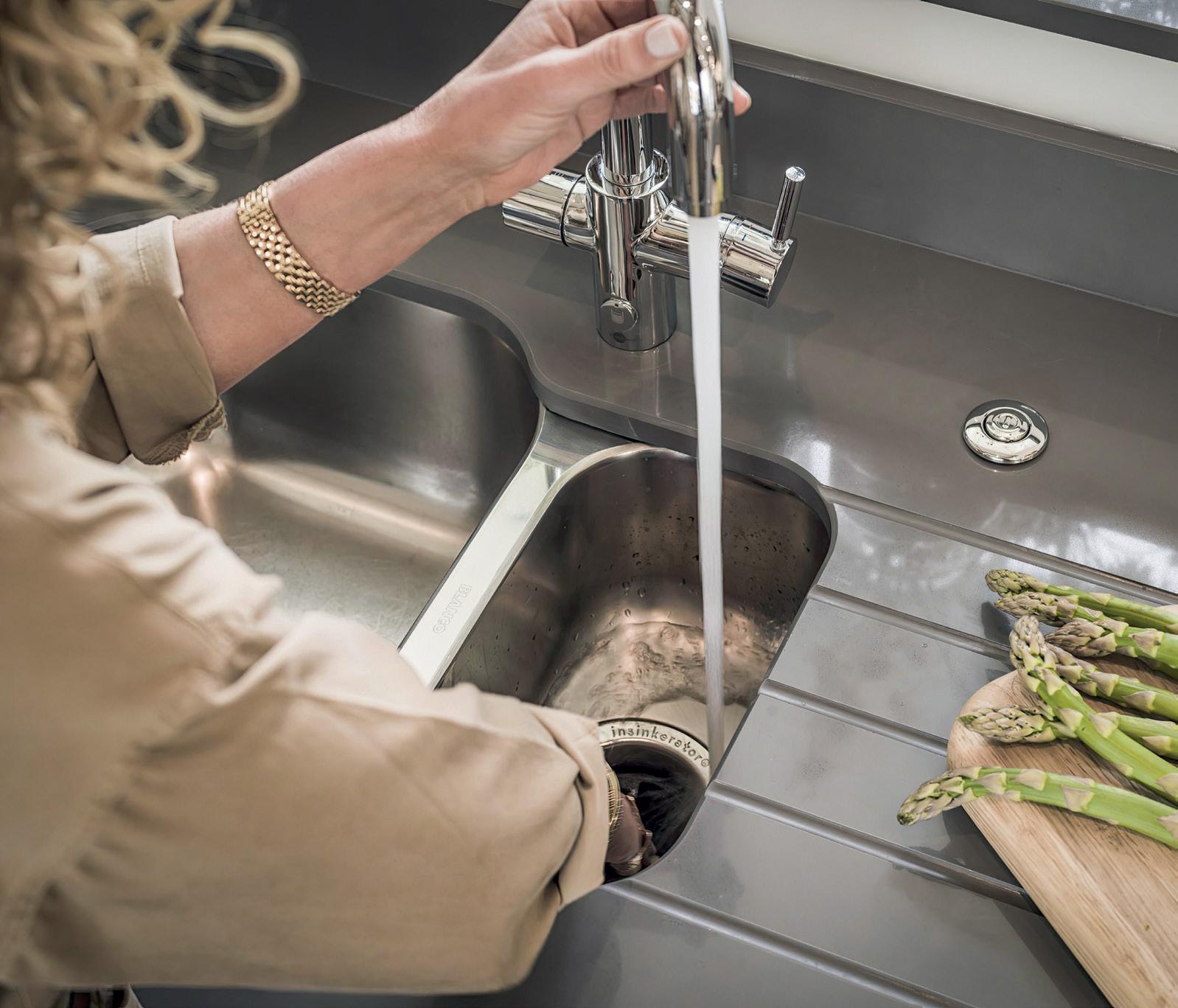
Has the Pandemic altered the way people to see your products; perhaps as part of a home that is more easily sanitised?
“Yes. In fact, the pandemic affected and changed a lot of our domestic habits and lifestyles. We are spending more time in our homes now and that make us care more about home improvement; more and more, we feel it’s important to equip our houses with the latest products and technology - and that’s where InSinkErator products play a big part.”
Do you feel that there are unique installation issues to be addressed here in the Middle East, as compared to other parts of the world?
Bringing Technology Home
meconstructionnews.com The 100th Issue
46 | Technology
In the last issue of Middle East Consultant, we started a new theme of speaking to manufacturers and suppliers who offer innovative, high-quality solutions that put them at the forefront of procurement indices across the region. Here, we speak to Mohamed Karam, Senior Business Development Manager, Middle East & Africa, for InSinkErator, the waste disposal champions who define their services as ‘Renewable energy production - Carbon Footprint reduction’
“Well, it’s a truism that every market has its own characteristics and challenges, but for the MEA region we don't face any really challenging installation issues, apart from the oldest buildings, which don’t meet the necessary standards and building codes.”
Is the market here more or less conservative when it comes to product selection?
“This is not at all a conservative market - just the opposite. Consumers in MEA markets, especially the Gulf area, are always looking for the most recent, trendiest products. We’re happy to oblige.”
How are your products aligned with the needs of interior designers and architects?

“Really, they are aligned in every way. Our products meet most of global standards, such as UL, CE, SASO, and so on. They are sold in 105 countries, from Australia to Brazil.”
Are most of your clients individuals, or developers who want to install your equipment across a large number of properties?
“Both. If we are talking about large quantities, then for sure the developers and real estate operators are major customers. For example, Diamond Developers installed around 600 disposers in their Dubai Sustainable City project. Plus, we are also we starting to see interest from the retrofitting specialists, as they would like to increase efficiency and sustainability in their projects.”
What are some of the key international safety benchmarks that your product suite is aligned with?
“As mentioned earlier, our products meet the highest global standards for safety & quality, and are designed to help other companies do so, too. For example, the installation of disposers contributes one point towards the achievement of the National Green Building Standard, the ICC/ANSI-approved residential green building rating system.”
Tell us about the company’s history and growth? What are some of the current plans for future development?
“It all began in 1927. That year, Lindbergh flew solo from New York to Paris. Coolidge was in the White House trying to make life better in America. Meanwhile, John W. Hammes, a prestigious Racine architect, was in his basement trying to make life better in the kitchen. After watching his wife clean up messy food waste after dinner, he had an idea: What if food scraps could be ground into tiny pieces and flushed down the kitchen sink? Before dark, he found himself tinkering with sheet metal, a make-shift grind mechanism,
a small motor, and a big idea. He wasn’t trying to change how the world works, simply trying to change the way his wife works. But by the end of the night, he was on his way to accomplishing both. The food waste disposer was born. And kitchen clean-up would never be same.
“He had indeed found a better way to dispose of food waste, and over the next 11 years he perfected it. By 1938 it had become the basis for a company and his practical idea goes on to build a powerful American brand.
“By 1968, InSinkErator was acquired by St. Louis-based Emerson Electric Co., the global technology and engineering company. Then on 8th August, 2022, InSinkErator started a new era, when Emerson entered into an agreement with the Whirlpool Corporation to sell its InSinkErator business. Today, with the support of the Whirlpool Corporation, we will continue to accelerate growth opportunities, develop innovative products and sustainable solutions for our customers and ensure an engaging workplace experience for our employees. Plus, we want to drive positive impact for our communities and all other stakeholders.
What level of innovation do we see in your products?
“Our products have a variety of patents; they underpin our status as the pre-eminent inventor and biggest manufacturer of food waste disposers.”

Is your product range customised market-to-market, or is it the same internationally?
“Here, we work in a similar way as other household appliances, in that the basics are the same, but we add different features and options to meet the specific market needs and requirements of each territory and regional market - because of course, tastes, behaviours and preferences will differ somewhat. We need to be at the forefront, positioned as the natural choice wherever our products are available.”

The 100th Issue meconstructionnews.com Technology | 47
The Insinkerator concept is an important first step in ensuring a fresher, more hygienic kitchen and results from decades of development and research.
Nour Albilal, Graduate Project Manager, Compass Project Consulting.
Facing the Challenges
What does it mean to be a young Saudi woman working in project management at the front-line of the Construction sector in ‘new-era’ Saudi Arabia? Nour Albilal, Graduate Project Manager, Compass Project Consulting, gives an insider’s view…

hat first inspired you to start your project management journey with Compass?
“Project Management was an interesting topic for me since I was a student. In 2020 I took an elective course that covered the fundamentals of project management and from that point, I was really inspired to find my way into this field.”
Is this a career path that is popular among your friends and peer group, or did you really ‘break the mould’ opting for this career?
“I definitely ‘broke the mould’ and took a very different direction than most of my friends. Most of my peers are working as architects in different industries. I am glad that I got the chance to start my career path as a Graduate PM with Compass.”
meconstructionnews.com The 100th Issue
48 | In Practice


The 100th Issue meconstructionnews.com
What would you say have been the main challenges facing you, as a young woman, making this career choice?
“Pursuing a career in project management as a young woman made me face many challenges - such as being on-site for two months working on one project and having to deal with the difficult, challenging stakeholders involved in the project. Life became a total balancing-act: I was working on other projects simultaneously and then trying to manage time between being fully on-site and working on a raft of other initiatives remotely. However, I believe that facing these challenges head-on has undoubtedly given me great exposure and learning, which will reap a lot of benefits for the future.”
Saudi Arabia has increasingly become a major fulcrum for change across not only the construction and development sectors, but in its social and community stance.

What are the key projects you have been involved with so far; are you connected with any of the famous ‘giga-projects’?
“Compass opened the opportunity for me to work on prestigious projects in sectors such as F&B, entertainment, and cinemas - all major industries in growth trajectories here in the Kingdom. The interesting thing is that no two projects are the same, which makes the project manager role challenging, but also interesting - and it certainly builds my knowledge.
“I have not had the chance to work on the giga-projects just yet, but I am sure it will be on the horizon, and I am looking forward to it in the near future to gain some exceptional experiences.”
The 100th Issue meconstructionnews.com
50 | In Practice
I love working with clients where I have a common engagement, building relationships with clients, being an active listener, and asking strategic questions”
C M Y CM MY CY CMY K
Office Location: Millennium Plaza Tower 14th Floor, Sheik Sayed Road P.O.Box 26290, Dubai, UAE www.intertek.com
Tell us about the style of training you receive; is it quite intensive and what key skillsets does it cover?
“I received mentorship as well as on-job training through working on multiple projects with different Project Managers. All of which led me to understand the project management framework, integration, scope, cost, risk, procurement, tendering, and communication – not to mention many lessons on soft skills too. Throughout all this learning, I also had to focus on maintaining and maximising the efficiency of my work rate on the projects.”
What did you study at college and how did you first make your transition to this sector?
“I studied architecture, and it was an amazing journey. I learned from my five years of being in university that working on a design project requires - above allmanagement (even if you are a student!) from the initial stages until the final submittal, and that’s what made me take the elective course to learn about the fundamentals of project management.
“This shifted my mindset into a different direction: I learned that architects make great project managers; they can bring considerable value to projects with their wide range of skillsets. That breakthrough is what inspired me to make this transition.
I believe that joining the graduate development programme with Compass was a great opportunity for me as a Saudi woman to take the first step into the project management industry.”

Do you work directly with clients at the moment, and if so, are they Saudi nationals?
“Of course, yes, I do work directly with Saudi clients, especially for F&B projects. I love working with clients where I have a common engagement, building relationships with clients, being an active listener, and asking strategic questions.”
We see a number of key themes becoming fashionable in the
industry - eg, the rise of the ‘15-minute community’, the quest for Sustainability, initiatives to make areas focus on Wellness, etc. Which of these topics interests you most?
“Sustainability is an interesting topic for me because concentrating on sustainability makes the environment better, which in turn has the benefit of improving people’s lives. Plus, it can be implemented in different aspects of life, from building technology, to daily practices to prevent the depletion of natural or physical resources, so that they will remain available for the long term. These are all ways of thinking which I am excited to see come to life globally, and especially for the Kingdom.”
How do you potentially see your career progression? Have you identified any specific areas where you feel your unique and preferred skills will be best-suited?
“The knowledge and experience that I have and will gain during the graduate
programme will lead me to great opportunities: so, starting from being an assistant project manager working at Compass, then moving up the ladder and gaining valuable experience. Perhaps even making a mark on the development of my country.
“I believe moving into senior-level positions surely increases duties and the level of responsibility and I am working hard on all these until I achieve my target. Another interesting revelation that I have been able to build on, is that I have unique skills such as being able to focus on details and having a passion for getting things done, and I am a great communicator which I believe is an advantage for progression in the Project Management industry. Dare I say that the future is bright and so many opportunities await…?!
The 100th Issue meconstructionnews.com 52 | In Practice
C M Y CM MY CY CMY K
since 1956

CELEBR AT E
A R CHI TECTU R A L i nno v a ti o n
A ST O UND I N G su cc es s

G LO B AL r ec o g n itio n
I N O VE R 2500+ P R O JE C T S
D E S IG N RE -I M A G IN E D


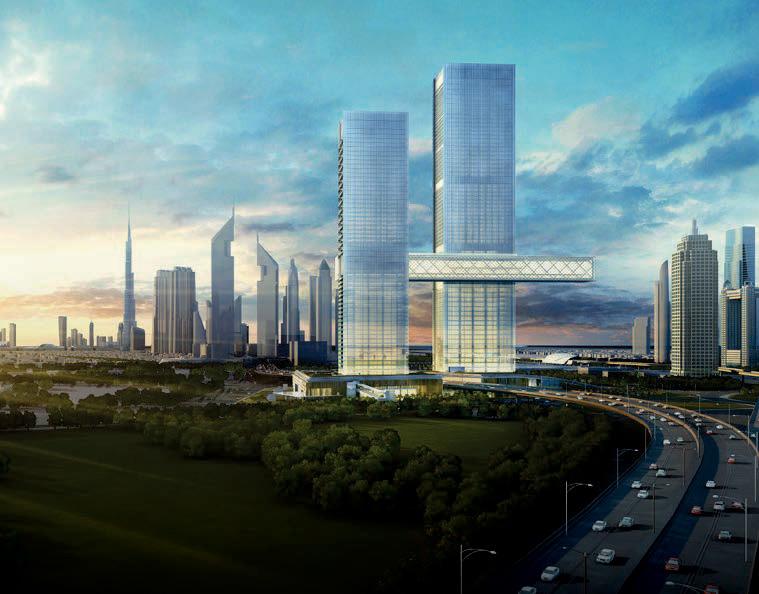









2015, 2016, 2018, 2019, 2020, 2021 & 2022 COST CONSULTING COMPANY OF THE YEAR COMPANY OF THE YEAR 2021


























































































